Five grand touring family vehicles to buy in 2024
If your family loves to hit the road at every opportunity, these five vehicles will help you quickly whittle down your shortlist and get packed for your long weekends, Christmas/New Year break and Easter holidays…
Touring vehicles are designed for completing two primary objectives: taking as much of your stuff as practically possible, in the greatest amount of comfort.
But there are small SUVs purporting to be much bigger than they actually are, and plenty of big, expensive SUVs that are just not as objectively well designed for touring as a more conventional wagon.
And before you get dismayed by the idea of reading a report about wagons and their empirical merits, there are a variety of vehicles here that are suited to a variety of driving scenarios, but are particularly good at long-distance regional touring with the kids and stuff onboard.
This shortlist is designed to help you find potential candidates for vehicles that will be easy to pack, have ergonomic interiors that favour comfort and space efficiency, and which hit the important notes regarding utilitarian-type practicalities. This includes the potential to tow a moderate load, come equipped with tangibly useful features that bolster real safety and aid driver comfort.
So let’s take a quick look at exactly what kinds of features you need in a good touring vehicle, remembering that there is no such thing as the perfect car, and they are all compromised in some way.
Important touring vehicle requirements
Full-size spare wheel & tyre
It goes without saying that being stuck in the middle of nowhere with a flat tyre sucks. But the situation can quickly be remedied once you change the flat, unless of course you unpack the entire boot only to find under the floor is a skinny little donut commonly known as a space-saver spare.
These are barely adequate at the task of getting your entourage moving again, because you’re strictly limited to 80km/h, and they are severely compromised in terms of maintaining the vehicle’s general dynamic stability.
But a full-sized spare allows you to get the vehicle back to normal operating speed and handling. This means if you’re faced with any additional driving challenges such as an emergency swerve, limited traction on gravel roads or heavy rain, and especially when you’re travelling on unfamiliar roads with no certainty about a tyre shop in the next town, rolling on correct rubber is crucial.
Ample luggage space & design
Few things can be more frustrating when you’re packing the family holiday gear into the boot than finding you have some notionally clever but wholly impractical design ‘idea’ hindering your progress. Things like sloped wheelarches,
Clunky cargo blind integrations cut into usable space and can hinder general use. Raised boot floors that accommodate a full-size spare also cut into usable cargo space, and mean you have to lift heavy objects like eskis or strollers that extra inch higher.
SUVs are often perceived as having huge boots with an abundance of room, but in fact they’re generally tapered off at the roof above the window line, in order to reduce their boxy shape. This often means getting large square or long objects into the boot is inefficiently taken care of because you end up with unutilised voids where you can’t really fit anything in the slightly wider lower bottom-half of the luggage area.
With row three collapsed (in 7-seaters) and utilising the conventional five-seat layout in the boot, you can see above how the shape of a luggage compartment can be hindered by wheelarches and the overall tapered-in upper section around the D-pillar windows merging into the roofline. (The orange box, basically.)
If the tops of the wheelarches are sloped, you can seldom use them as a flat surface upon which to pack things without them rolling. Similarly, the aft cubbies on either side of the boot (the red boxes above) are seldom functional for much else beyond spare shoes or some kind of random toy.
The point here is that large SUVs while offering three rows, can often waste their available boot space when in 5-seat mode, making them inferior to much more affordable five-seat-only medium SUVs which are unincumbered by having to offer up that third row. So unless you strictly need seats 6 and 7, depending on your requirements, a medium SUV might offer more for less.
Towing and roof racks
Even a light trailer can significantly improve the load-carrying potential of your family vehicle on holidays. Obviously it increases the complexity of parking by an additional 25-50 per cent depending on the length of the vehicle, but the benefits are profound in how much load it takes off the primary vehicle.
Should I order my new vehicle with a dealer-fitted towbar? >>
Small SUVs generally suck at towing thanks to low capacities and their underpowered engines that generally struggle with much more than a light trailer going short distances. Same goes for city hatchbacks. But some medium sedans aren’t actually that bad and are worth considering for light duty towing. Something like a Mazda 6 or Toyota Camry are okay for very gentle assignments.
For an decrease in available vehicle payload of up to 200kg worth of towball download, for instance, you gain 2000kg in trailer+cargo. But the weights need not even increase that much. An unbraked 255kg single-axle box trailer with a maximum 750kg payload (as permitted) will often be more than enough to massively improve the operational envelope of your family vehicle. And rather than putting the wear and tear onto your new vehicle, the punishment is borne by the trailer, which it is much better at doing than the carpeted, plastic and leather interior.
Putting bulky, awkward items up on the roof is a win for overall holiday consignments. Getting them out of the way means they’re not going inside the vehicle, nor taking up absurd amounts of space on the trailer. But you have to remain vigilant.
It’s very easy in the bustle of loading the vehicle, the distraction of squealing or giggling kids, and the mental arithmetic of driving in the roads today to completely forget there’s thousands of dollars worth of bikes, kayaks or surfboards up there. It only takes one lapse in concentration to rip everything off on the first McDonald’s drive-thru overhead height restriction board.
And if you think it can’t happen to you, that’s what they all said on the DashCam Owners Australia YouTube channel. Good idea to set yourself a reminder at 12 o’clock on the steering wheel with some low-adhesive painter’s tape.
Australian roadtrip basics: carrying spare fuel >>
Practical cabin layout
Nothing ruins the operational efficiency of a new vehicle than stupid placements of various so-called features, or otherwise poorly designed but notionally good ideas. We’re talking cupholders that you either cannot access easily as the driver, of which are simply too big or small, or too deep or too shallow, or which are simply positioned in such a way they impede the function of other aspects of the cabin’s basic operation.
Cupholders might seem trivial, but they are actually a highly important aspect to a vehicle’s cockpit, because like any fighter pilot or sea captain, you need to remain awake and attentive to the driving task. Smart cupholders go completely unnoticed on your ergonomics radar, but bad ones will grind on you every - single - trip.
If you’re old school and prefer buttons over touchscreens, you’re in a weird period of car design where buttons were all-but disappearing and screens were dominating. But there are signs of a return to buttons on the horizon. And some carmakers have at least taken the time to think carefully about how they design their screens and the icons within.
Subaru, for instance has gone hard on the big portrait touchscreen in some attempt to seem contemporary. Even though Subaru drivers tend to prefer buttons which offer haptic feedback, they’ve designed big, easy-to-hit icons.
Further to that, there are temperature buttons either side of the screen. Unfortunately, the fan speed and HVAC controls are down the bottom of the screen, meaning you’re looking down rather than keeping your eyes up and looking down the road.
Having somewhere to put your phone seems like an easily solved issue in modern car interior design. But it’s perversely and surprisingly common to come across poor ideas for stowage. Cubbies that are simply too shallow, or barely wide enough for his & hers side-by-side, or positioning that doesn’t allow for easy access for normal-sized fingers to access the USB ports - are all too common.
Likewise, door bins and their respective bottle holders can be too narrow, insufficiently wide enough to let a regular sized hand to access their own wallet or keys in there, happens too often. So check these areas before buying.
Non-essential (but nice to have) bonus features
All-wheel drive: You don’t strictly need all-wheel drive or four-wheel drive in order to get a good touring vehicle. For the majority of places most people are likely to drive on school holidays with the kids on board, sealed bitumen roads are going to be the mainstay and traction is going to be pretty good for virtually the entire time.
But AWD does have a place on grassy campgrounds or sketchy gravel roads during sudden downpours, as well as steep driveways.
Rear air vents: While not entirely mandatory, it is a great relief having rear air vents blowing cool or warm air into the back half of the vehicle.
Third-row seating: Three rows of seats are very useful, but there’s a catch. If you’re not actually using them, they become a weight burden on the powertrain that otherwise wouldn’t exist in a standard five-seat SUV. Plus, they rarely fold completely flat. And even when you do use them frequently, they’re often compromised in terms of access to adults, or their ability to take booster seats or full child restraints.
Roof rails: While most family SUVs will come with roof rails these days, it’s important to know that not all of them do. Some poverty pack base models don’t get rails (that run lengthways along the roof line), which means that you’ll need to buy a certain type of roof rack system that includes attachable feet that locate into the predetermined holes already set into the vehicle’s roof at manufacture. Don’t worry, this is not some overly convoluted additional step, it’s just a different design of roof rack.
Much like adding bikes and kayaks to the roof, be conscious when adding a luggage pod, a platform or basket to the roof that you don’t rip the whole thing off on the first overhead gantry you encounter at the KFC drive-thru or underground parking garage.
Also, make sure you know how heavy the load is going onto your roof rails and racking system because carmakers usually have roof weight limits of around 75-80kg depending on the model.
I'll help you save thousands on a new Outback, Palisade, Carnival or Outlander here
Just fill in this form. No more car dealership rip-offs. Greater transparency. Less stress.
KIA CARNIVAL (or Hyundai Staria)
A Carnival is an enormously practical, functional piece of family touring equipment. There’s very little it cannot do, and the versatility it offers - for the price - is almost unrivalled.
The ability to have both the full-house mode with seven seats in-use, or drop both row-three seats completely, you can then have either seat six or seven. This means you can have long objects, big and bulky ones, or any multitude of combinations, and all without having to hire a van or some rental truck.
On the rare occasion you need to move house or pick up a new TV, and there are very clever design elements that make it both highly practical and smart at the large-object moving task. Little touches like the 12-volt power outlet in the boot are inset into the panelling so it’s not going to get clobbered by loading up a folding table or some bulky object.
The loading aperture is wide and tall, with a minimal lip edge to stop stuff sliding out the back if you’re on a slope or when the tailgate opens. The aperture also has a lip edge that continues up the sides, stopping big stuff sliding out. The side cubbies also get lip edges so things can actually be stored in there without falling out under lateral movement.
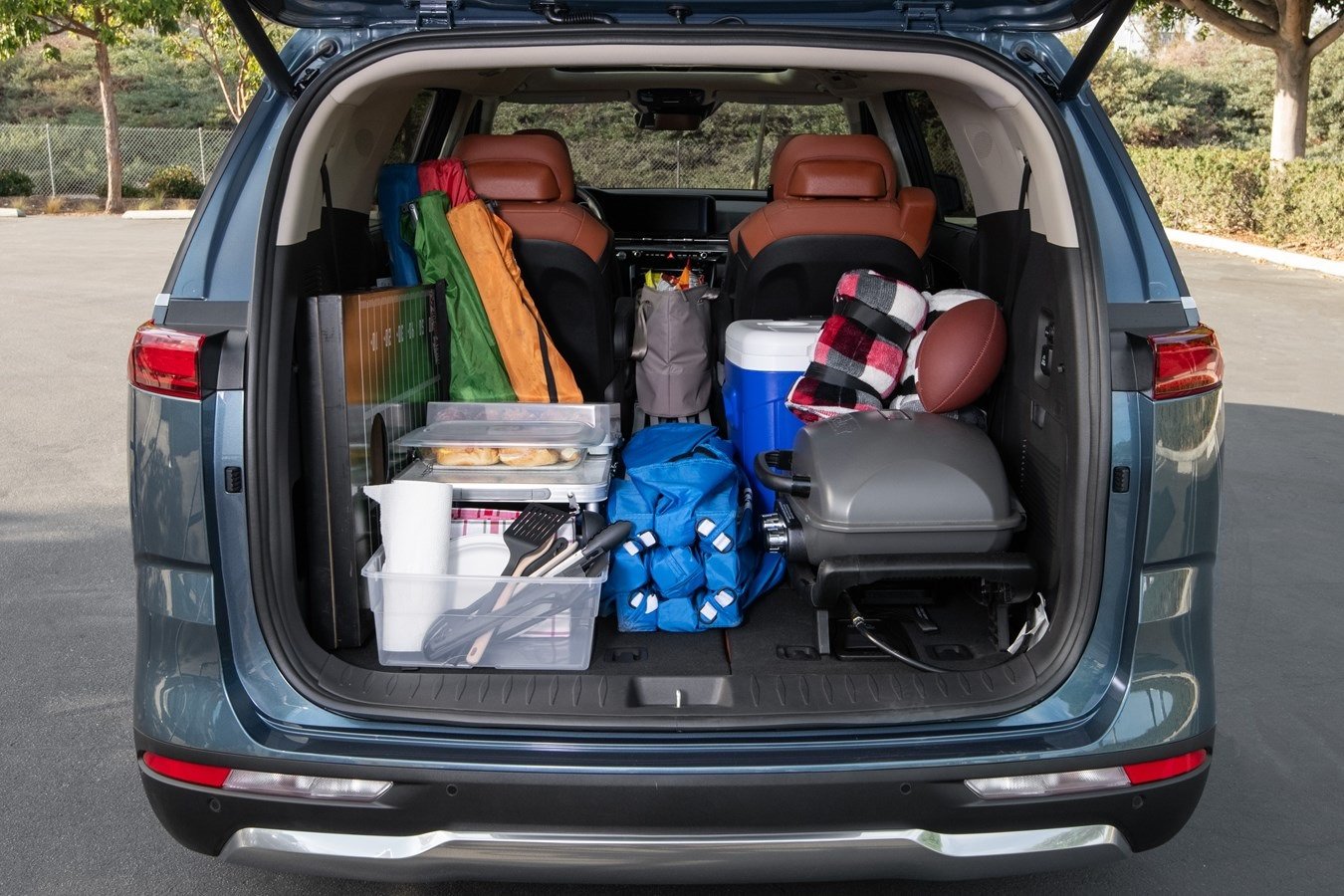
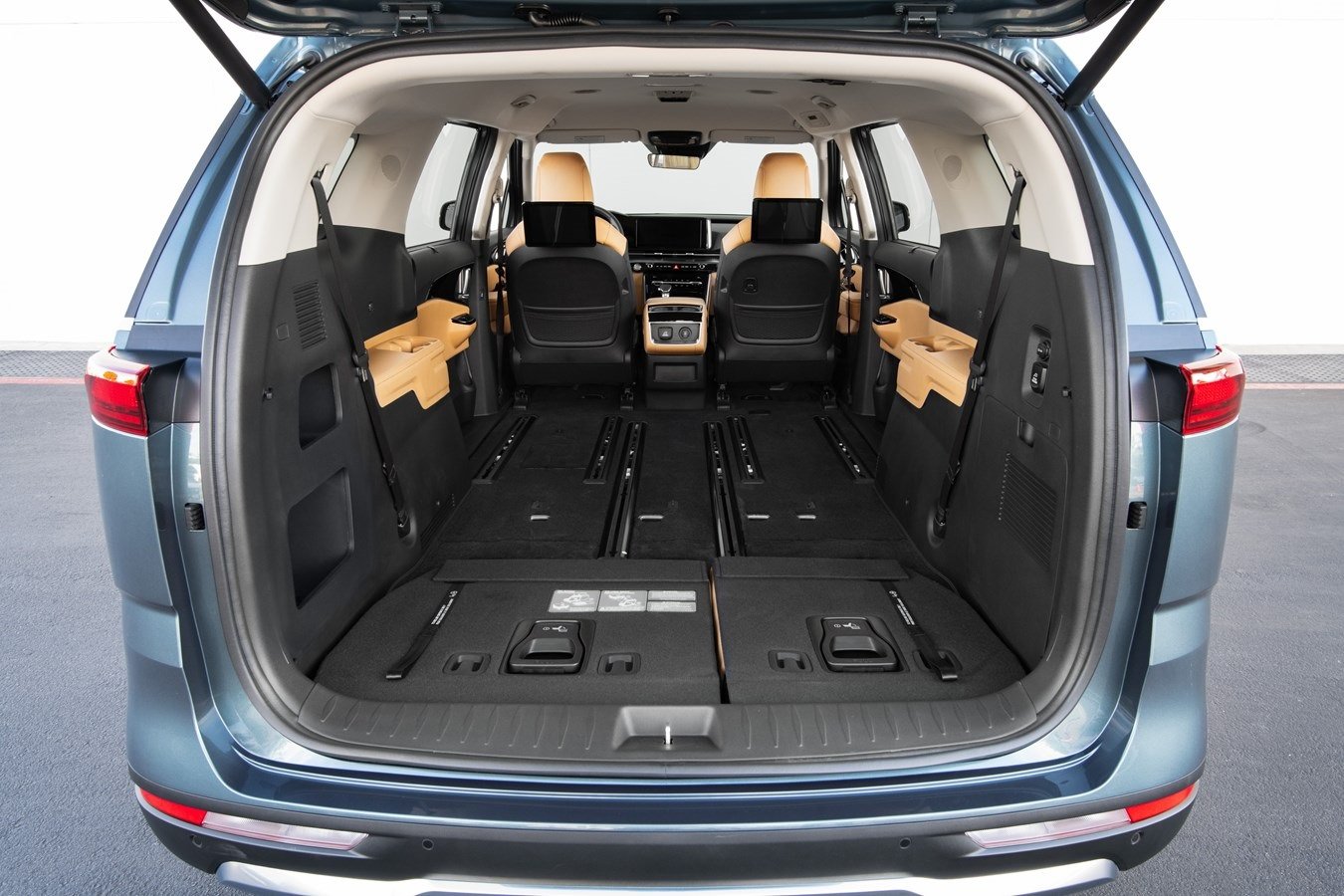
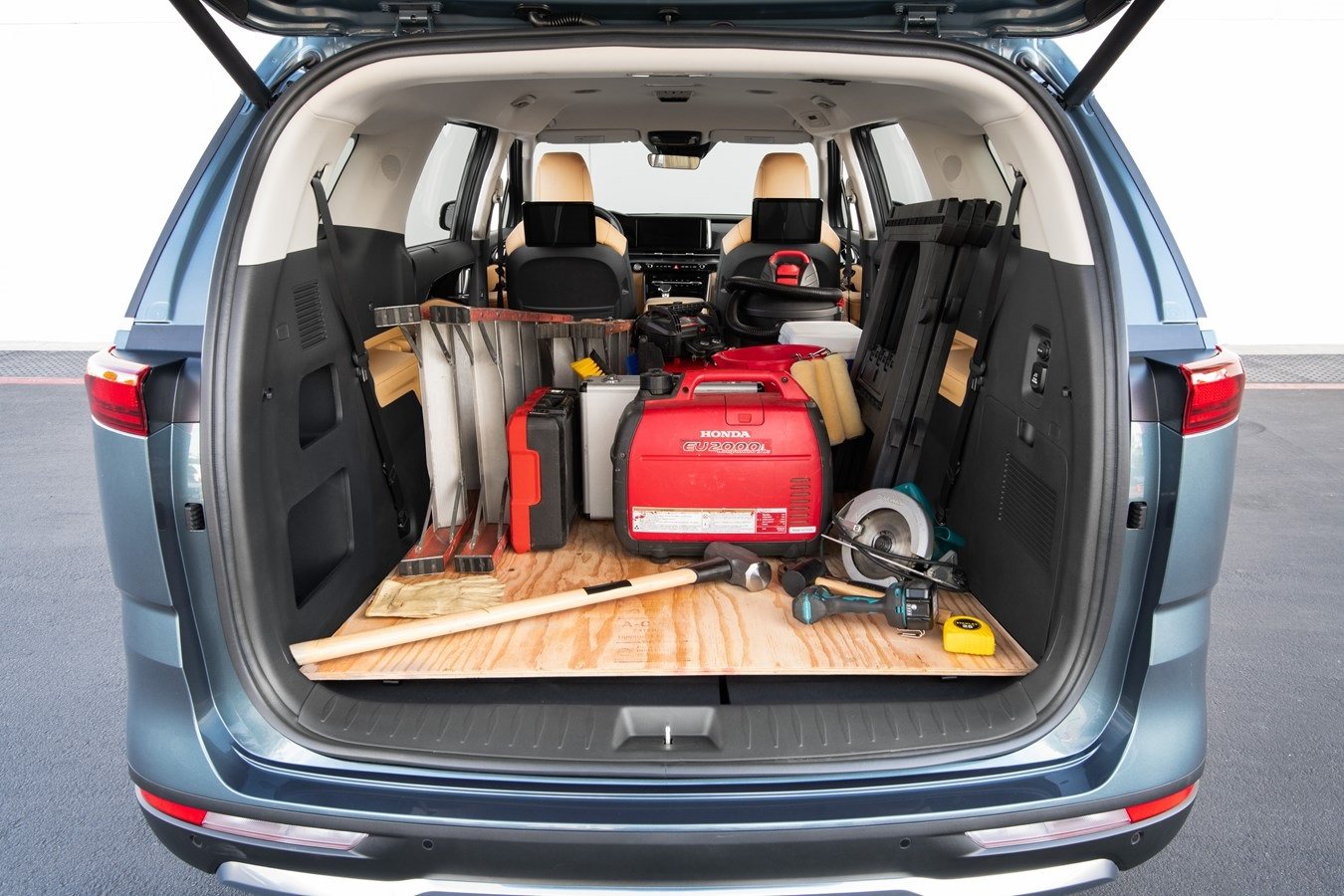
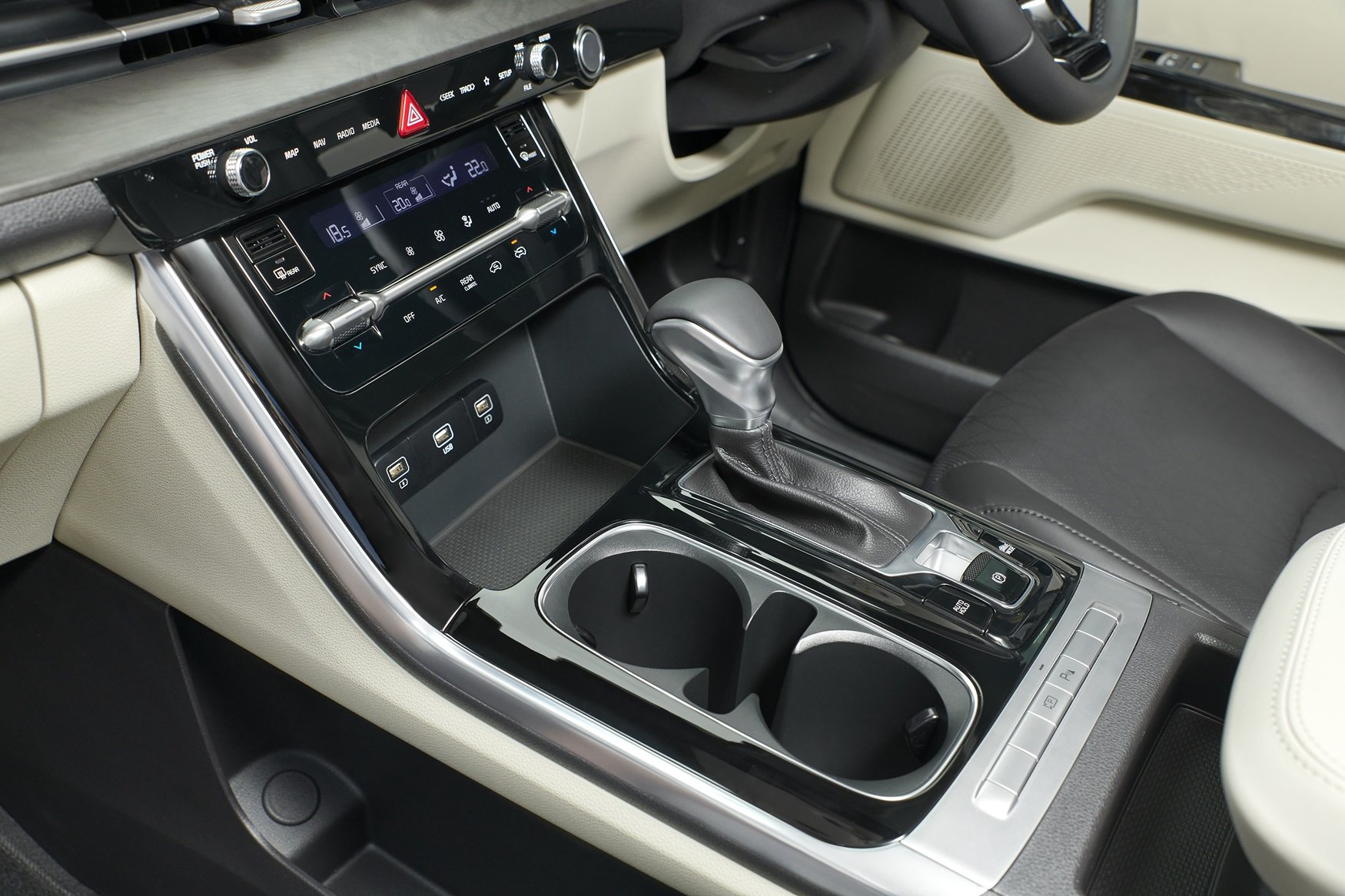
When you’re loading up to take the kids away, if row three isn’t being used, you can stow things on top of the rear cupholders. Then up the front, you can stash stuff underneath the central console tunnel, and the cupholders on top of that are damn-near perfect - the right depth, width and positioning relative to everything else.
In the Carnival’s overall design and shape, the intention to make it look less of a people mover and more like a big SUV means the roofline which slopes very slightly inwards doesn’t have any tangible impact on packing things tight and square. This is one of the reasons you can fit an entire fridge in with rows two and three folded.
The primary drawback of the Carnival is the space-saver spare mounted externally on the driver’s side of the vehicle, the right-hand side. But this is offset by the sheer breadth of versatility, which includes a decent modest towing capacity and roof rails, that gives to a multitude of options for countering this spare wheel problem. This includes ordering your own genuine alloy wheel which can be stowed in a roof rack basket system or on any trailer you take on your journey.
If you want a more in-depth assessment of the Kia Carnival, get my full review here >>
There is an alternative toe the Kia Carnival available in the event that you need even more space, particularly in the vertical plane, or if you specifically want a full-size spare by default with the vehicle. Welcome to the Hyundai Staria.
Staria’s unique selling proposition is its powertrain. While the Carnival is strictly a front-wheel drive in either 2.2-litre diesel or 3.5-litre V6 petrol, the Staria can be had in all-wheel drive, making it an ideal ultra-stable big-family tour bus capable of heading into the bush on well-maintained gravel roads, to the snowy high country, or to the rainy northern regions.
It’s also highly capable of taking lots of interstate, school holiday related luggage, camping gear and can include gear on roof racks, although this option is not as ergonomic as on Carnival due to the roofline being a noticeable 21.5cm higher than on the Kia.
Towing is also more restricted on Staria owing to the limited towball download limit of 100kg - but a lightweight 6x4 box trailer (single axle) with a few bulkier items like bikes, kayaks etc will still be quite possible while keeping the towball download to a minimum.
SUBARU OUTBACK
Right off the bat, there are five really good reasons to put an Outback high on your family touring holiday vehicle shortlist. And it has nothing to do with Subaru’s venerable all-wheel drive system, which is very good, but I’d be hard-pressed to agree if you suggested it was better than the Mitsubishi Outlander’s Super All-Wheel Control >>
The first is the built-in roof bars. They might look a bit of an eyesore to outsiders who don’t have one, but people who actually own an Outback will rave about them. Being able to readily deploy those crossbars at a moment’s notice makes packing for the holidays one task simpler. They simply swing across to the opposite side, slot into their respective location point, and they just latch into place making them immediately ready to take any luggage capsule, ski mounts, bike holders or even lengths of timber from the hardware store.
The only real drawbacks here are the wind noise they generate on the freeway, which is minimal, but it’s there. And the second limitation is that they don’t allow you to install aftermarket roof racks that come with a crossbar that overhangs beyond the feet, whereby you can use ropes or straps to wrap around, rather than trying to thread the metallic buckles between the existing bars and the painted roof of the vehicle - begging to get scratched. If you’re not a klutz, this won’t be a big issue. You can also overcome this by going for the Outback Sport variant which deletes the in-built crossbars allowing you to use the overhang types.
Second is the ground clearance - it is quite good in Outback - at 213mm on the heaviest Touring XT variant. This makes it one of the best choices for most kinds of adventurous, remote travel that involves leaving the bitumen but not hitting the hard trails with the utes and 4WD wagons etc. But there are benefits when it comes to loading up, too.
The good ground clearance on this ordinary wagon-based body means you get the ride height native to the Liberty/Outback platform, but without the overly high body height which generally means you’re working at greater heights trying to load/unload to/from the roof. The higher up those roof racks, the harder it is to lift things up, and safely get down again without falling. For example, a LandCruiser roof is almost 300mm higher off the ground than Outback.
This leads us to the third great thing about an Outback - the full-size spare tyre - fitted under the boot floor. So not only is it kept dry and clean, it’s also protected from sticks, rocks and anything that might damage a spare mounted externally underneath. The main drawback here is that when you need to access it, you’ll be partly unpacking the boot in order to get it out
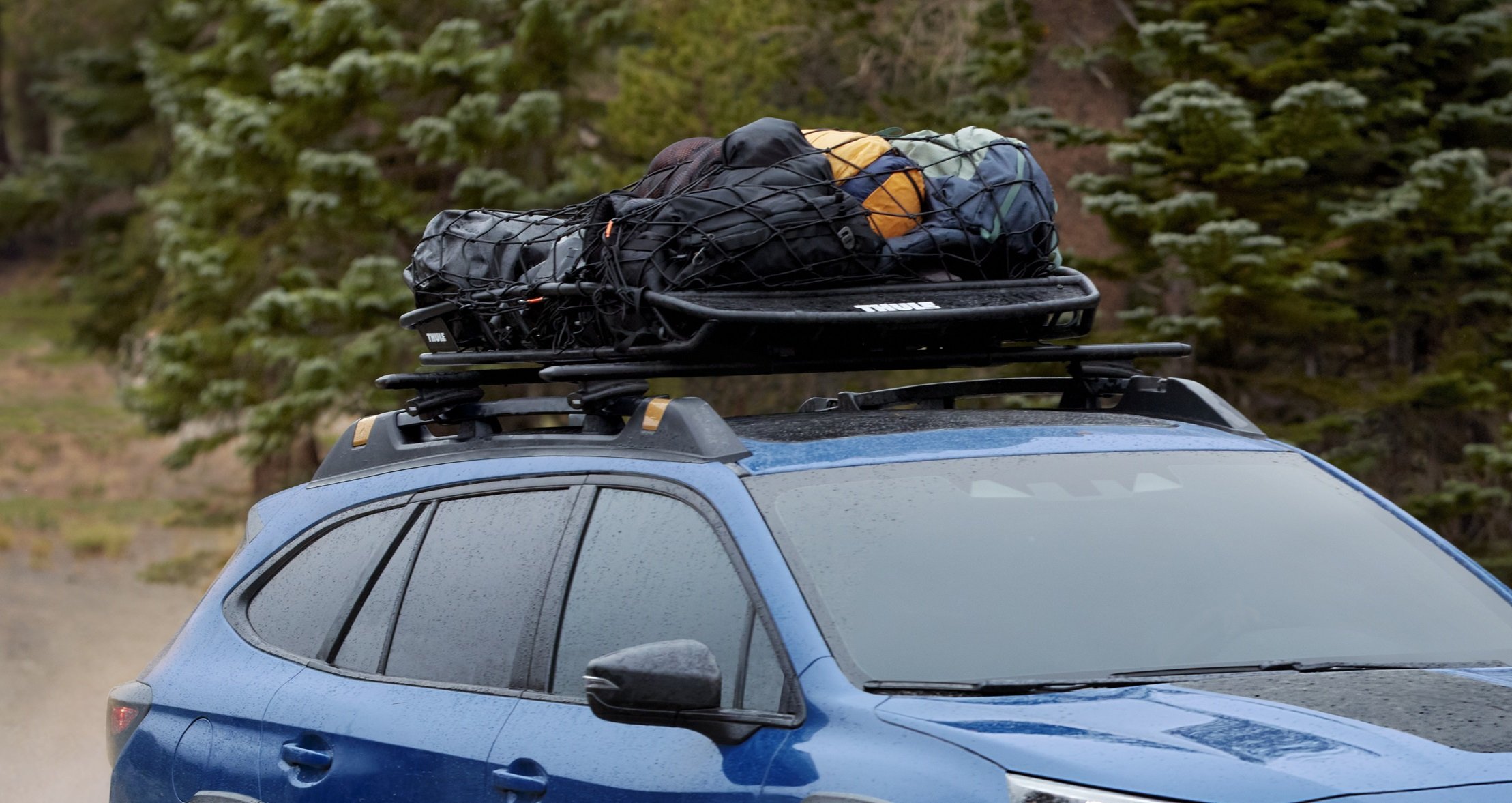
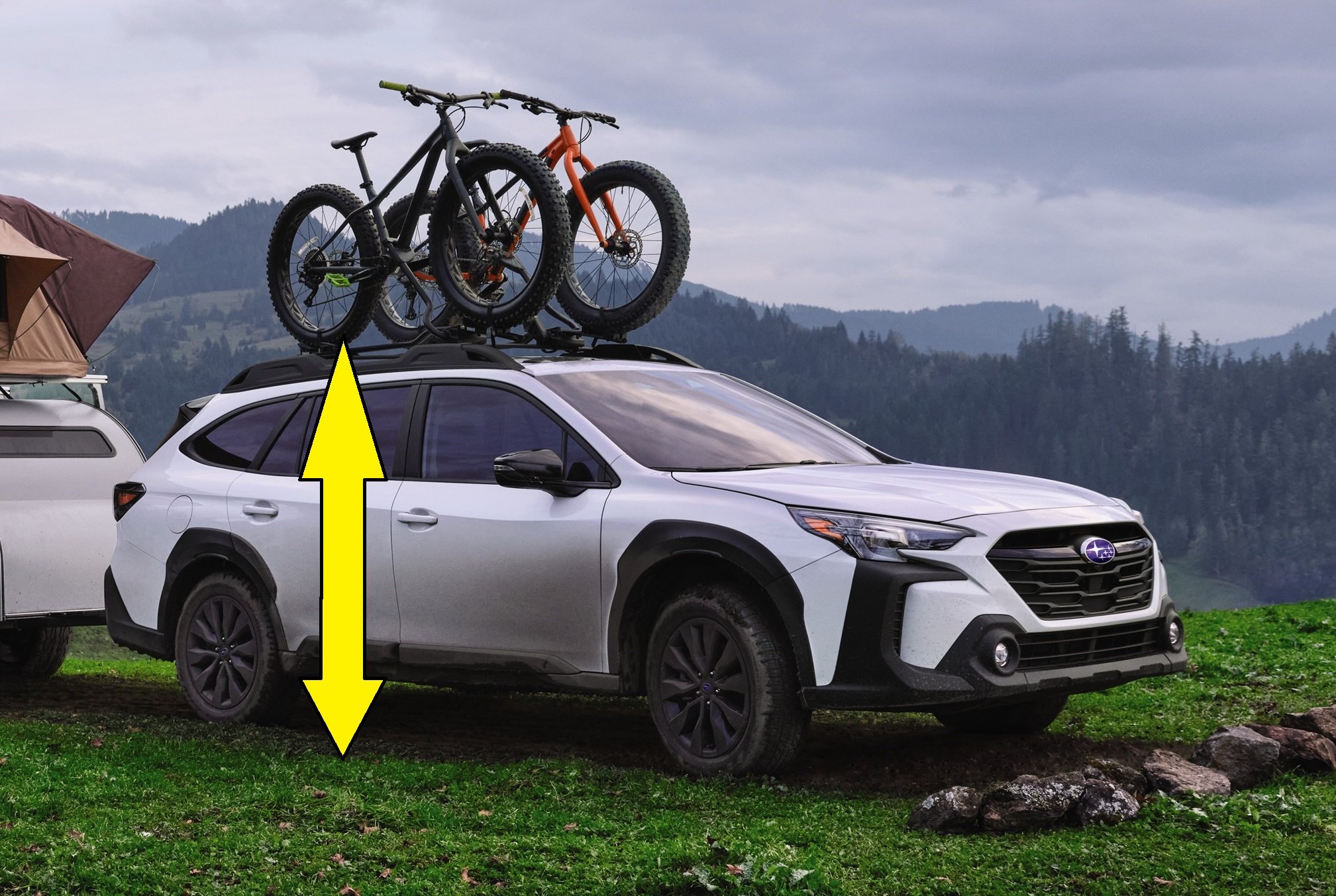

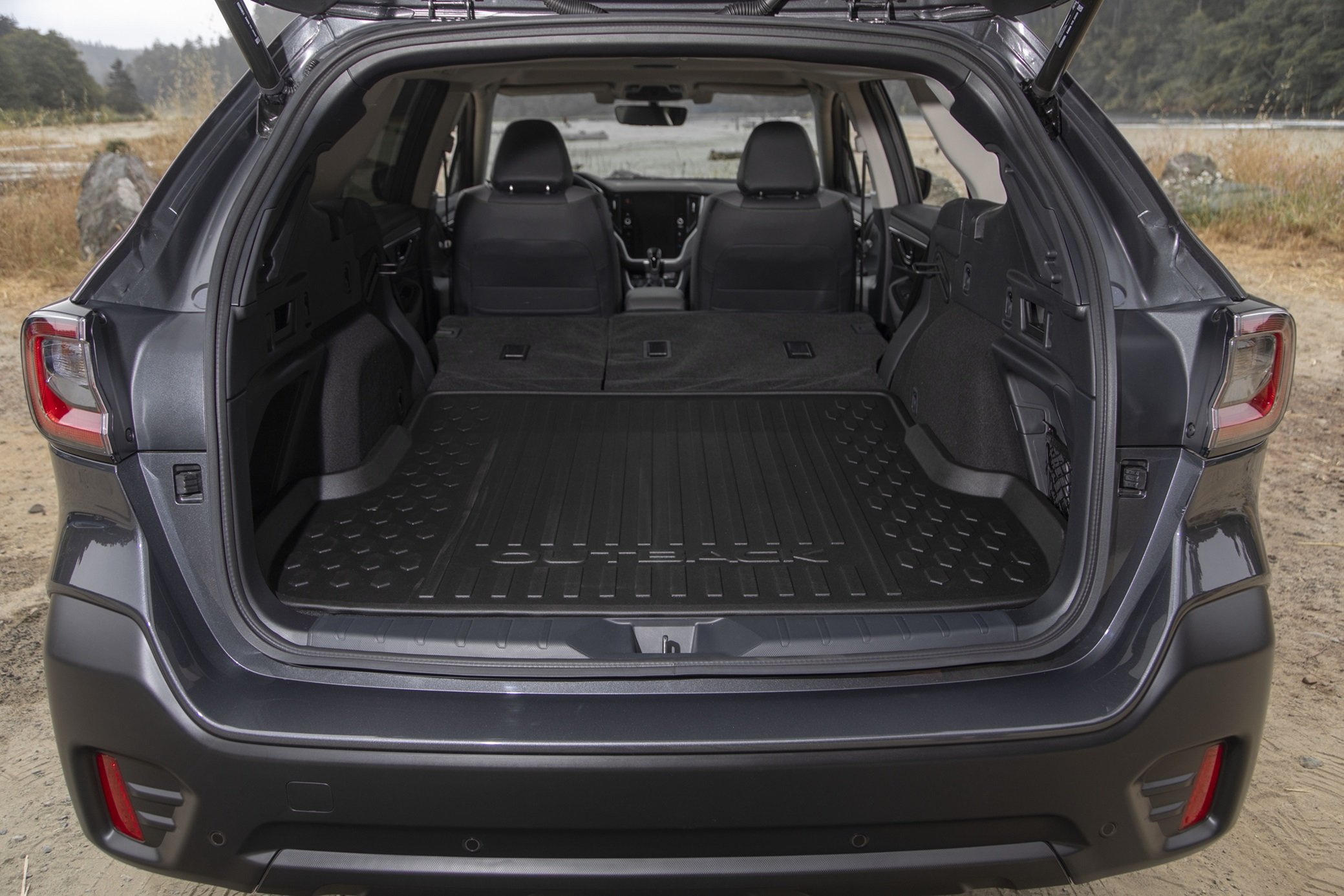
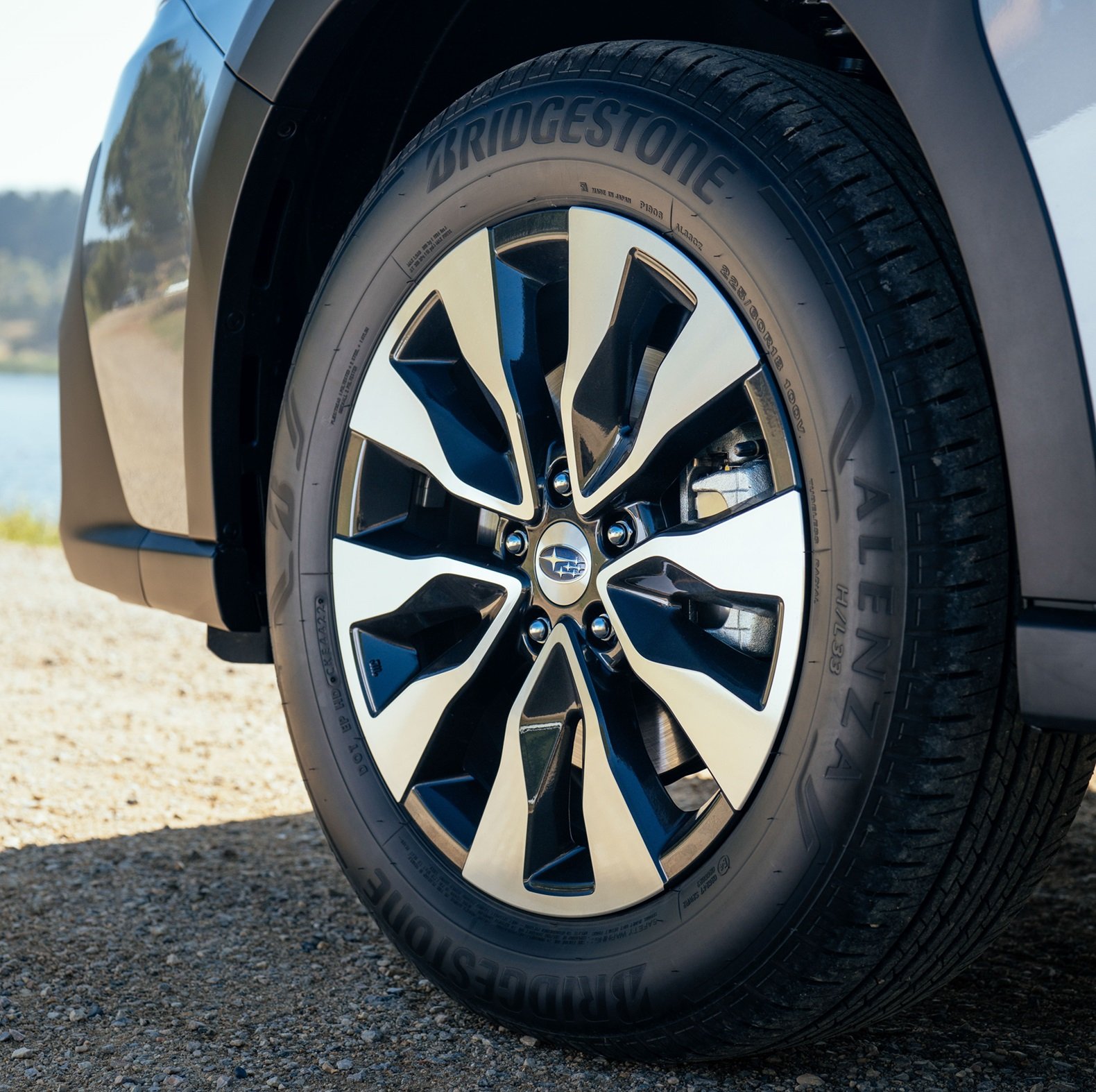
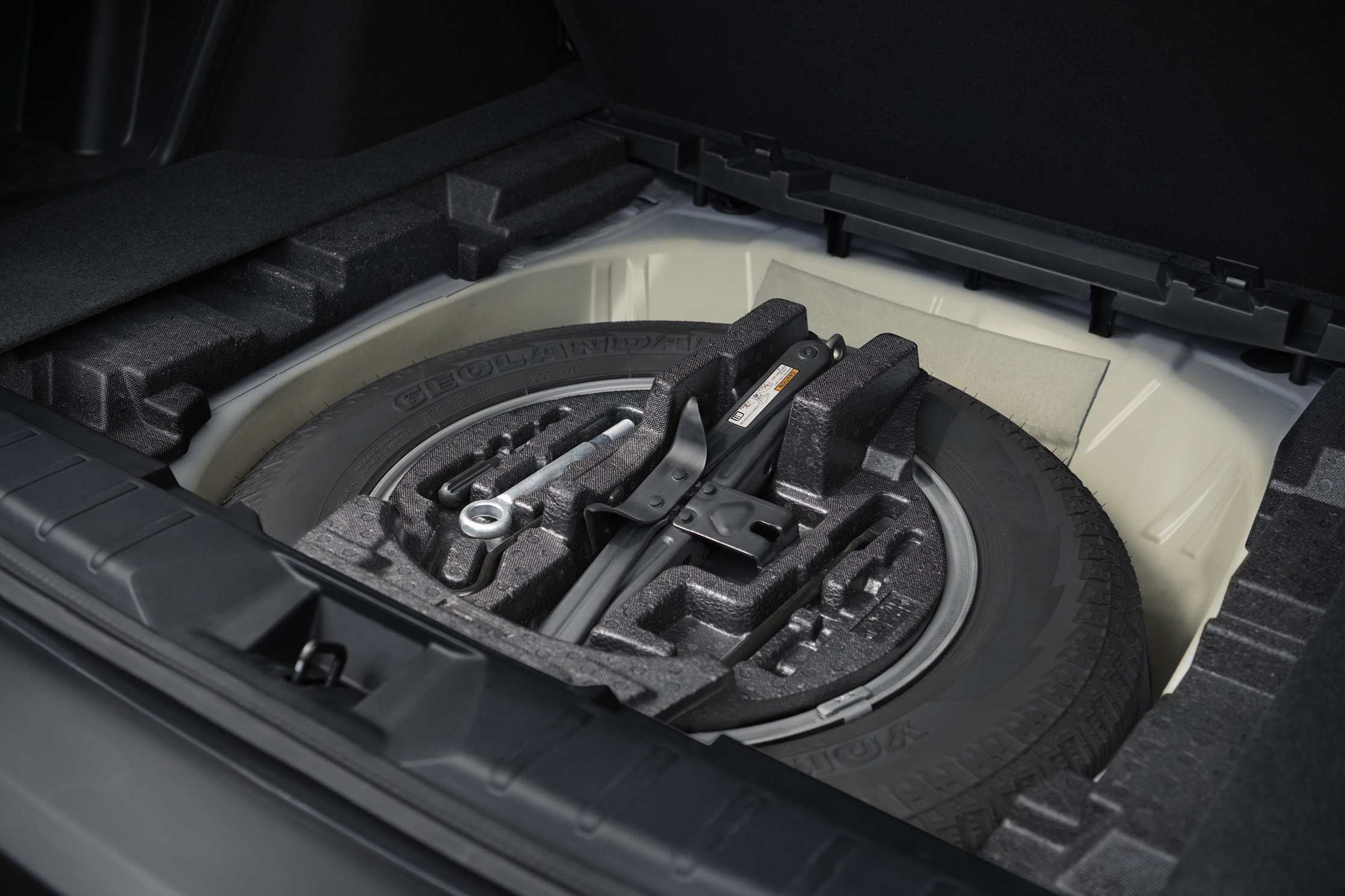
The fourth good aspect to owning an Outback for regional holiday roadtrips is the fact it runs on 18-inch tyres, meaning that not only is the ride naturally more comfortable and quieter when you’re on the road for hours on-end, but it means if you do receive that unfortunate puncture, there’s a much better chance the nearest tyre shop will stock a 225/60R18 over some 19-, 20- or 21-inch rubber band.
The fifth big bonus of an Outback is its business end - the boot. Its wagon underpinnings (owing to it being just a raised Liberty) means the boot is slightly longer than it is wide. This enables you to pack everything in a neat, efficient orderly fashion with no obnoxious wheelarches and very little intrusion from the sloped-in roofline.
For more detailed analysis of the Subaru Outback, click here >>
MITSUBISHI OUTLANDER
The broader appeal of this five-seater pretending to be a much bigger seven-seater is not actually related to its ability to tentatively seat seven backsides. It’s the value proposition.
Row three in an Outlander is severely compromised, but if you have tweenagers capable of sitting back there, even for short school runs, that’s a win - but guaranteed it’ll be like solitary confinement during long trips. This is where a five-seat Outlander comes with that large side helping of value.
A set of roof racks on a five-seat Outlander is a very smart solution to remote touring adventures with two kids and two adults, and you can further expand that envelope with the as-discussed light trailer if you need to spread the load. Just keep it under the 1600kg braked towing capacity with 160kg of towball download and you should be fine.
Ground clearance at 210mm on a higher-spec Exceed makes for a pretty decent soft-roader in combination with the Super All-Wheel Control system which you can see in action below.
Mitsubishi’s SAWC uses traction control and throttle mapping to simulate the reduced road speed effect of a low-range transmission. Below is a collage of the operational upper limits you should be cognisant of without actually going beyond with too much vigor - this is not a hardcore 4WD and should be driven as such.
In our original Mitsubishi Outlander PHEV is not ‘Australia Ready’ report >> this primary issue with that vehicle is its space-saver temporary spare which is absolutely not rugged ready. But what Mitsubishi Australia sought to prove, and indeed did prove, was that in fact it doesn’t take much to outrig even a standard combustion-only Outlander with the kinds of accessories that do make it capable of taking a full-size spare. Here’s the Mitsubishi Outlander PHEV Torture Test >>
Things like a cargo barrier in the boot, roof bars and a platform or caged tray make for good opportunities to fit-out the vehicle with not just a proper spare, but additional regional holiday travel necessities like a fire extinguisher, traction boards or spare fuel - much like the other vehicles in this shortlist. The drawback here with Outlander is that you have to do the logistical planning and ordering of parts, fitting them, and getting your operational proficiency up before putting them to the test in real life.
The fact you can have an Outlander ES five-seater with SAWC for about $45,000 is an absolute win for those on a tight, modest budget but whom still need the vehicle to remove the camo upon your return to civilisation and blend into regular stop-start traffic environments.
HYUNDAI PALISADE
While we wait for the boxy-arsed Santa Fe to arrive in earnest in 2024, the Hyundai Palisade makes for an excellent substitute to the overpriced, long-delivery time, overweight and largely underutilised Toyota LandCruiser 300, with its as-yet unresolved oil consumption problem.
If you insist on needing a full-size large SUV for your epic big-family adventures, don’t bother with some overpriced and someday-delivered LandCruiser, and the Nissan Patrol is an also-overweight addition to that bloated 4WD list. Get a Palisade instead.
The problem with a LandCruiser is exactly the advantage of a Palisade: the latter is not carrying around about 300-400kg of heavy duty off-road drivetrain that is superfluous for 90 per cent of the driving such a vehicle is going to do.
In its heaviest, most luxurious trim level, Palisade Highlander is just over two tonnes - 2070kg to be precise. A Sahara LC300 is an additional $60,000 and weighs over 2.6 tonnes, but only manages an official payload of 670kg compared with the 685kg in a Palisade. So you pay 80 per cent more to receive a notional payload of 2 per cent less. Same 11.8-metre turning circle, too.
The fact that when you open the tailgate there’s over 1.3 metres of load width means even the bulkiest of eskis and the fattest of camping equipment like tents, folding furniture and cast iron cookware will be swallowed whole. If you’re not taking kids in row three, you’ve got an entirely flat floor with over 1100mm of length in which to fit everything. Oh, and there’s a big fat full-size spare mounted externally under the rear.
That’s all pretty good considering the whole vehicle is only 15mm longer than a LandCruiser with a wheelbase (which determines legroom/cabin space) that’s only 10mm longer as well. Palisade is even 200mm (20cm) shorter in height than a LandCruiser, so it handles better due to a lower mass centre, and when you do decide to put stuff on the roof, those of you who aren’t 6-foot-5 on weekdays can still function well enough to get up to 100kg of stuff onto the crossbars or into the platform/basket you fit up there (make sure to take into account the weight of the bars themselves, obviously).
There’s the whole safe working height aspect.
It’s not as if the powertrain is anything to sneeze at, either.
Under the bonnet is a 2.2-litre turbo-diesel that has been a source of power and reliability for Hyundai (and Kia) in Santa Fe, Staria (and Sorento, Carnival) for many, many years now - with no technical issues, no DPF failures, no covered-up oil consumption, and no dusting problems via the air intake.
Having said that, Palisade of not a hardcore off-road weapon like the LC300 is. So let’s get that fact established here. There are some pretty competent drive modes that take advantage of Hyundai’s HTRAC driveline that provides active and dynamic all-wheel drive tractive effort. It’s capable of getting you out of unexpected dodgy situations, sure, just don’t go looking for tracks called ‘bluff’ or ‘spur’ or with any reference to a ‘widow’s’ anything.
Park on the hard sand, no problem. Soggy bush campgrounds with no amenities because: boonies - go for it. It’s a very good AWD system and has also proven itself reliable and quite capable of directing power to both front as the priority and rear as the reinforcements, but it’s active, so there’s no delay in waiting for wheelspin because it’s predicated on throttle input.
In the event you get back from holidays and have children who need to be fed, delivered to school and whose mates will invite themselves over on Fridays, Palisade seamlessly morphs into a seven-seat with top-tether points in five of those rear seating positions, including two in the far row. Two ISOFix points can be found in each of the outboard positions of row two.
Key Palisade drawbacks aside from the lack of low-range gearset (because we don’t actually need one) is the compromise on towing capacity, and the layout of the electronic park brake switch. The latter is on the underside of the dashboard above your right knee because it never got redressed in changing from left-hand drive US markets to the right-hand drive Aussie market.
As for the towing thing, you can get a Load Assist Kit from Hyundai which allows for 180kg of towball download, up from the standard 100kg. The maximum braked capacity is 2200kg on both the diesel and petrol (the latter of which sucks for fuel economy). But in the context of touring holidays, you don’t need to max out the towing on Palisade, you just need to take a bunch of heavy stuff like a BBQ, the 10-man tent, the gigantic eski, the fishing rods and tackle, and various paraphernalia.
None of this is going to put you anywhere close to the limit, meaning Palisade’s towing is a compromise, not a problem, in the true sense. Just make sure you subtract the towball download from remaining payload in doing your analysis of weight.
Need to know more? Hyundai Palisade has been updated recently; click here >>
MAZDA BT-50
With a full-size spare and the ability to add a rear canopy over the tray, it would be remiss to ignore a proper 4X4 dual-cab ute as a genuine option in Australia for regional and remote touring. The Mazda BT-50 is, for at least the first six months of 2024, the ideal option until we know the new Mitsubishi Triton is the real deal.
Having at least one ute in this shortlist is a good idea because one person’s idea of touring holidays might be slightly more ambitious than others. Those you prefer to stick to the highways and occasionally touch gravel upon arriving at the winery, might be the perfect idea of hell to those of you who would prefer to throw a line into the surf on one of Queensland’s windswept white-sand beaches between dingoes and saltwater crocodiles.
There are at least 10 Australian-owned and/or made brands of ute canopy out there that will happily stick one on the back of a BT-50, and you can go to town on any number of combinations and features. So let’s talk about the BT itself, shall we?
What makes the BT-50 such a sweet spot for dual-cab 4X4 utes is the price and the quality you get for that outlay. Something particularly nice in terms of cabin creature comforts will be around the $45-50K mark, and it will do a great many things your typical SUV absolutely will not do. Let’s start with the transmission, which is where the Palisade’s utilitarian prospects were much lower.
The four-wheel driveline in the BT is a more basic system, which is limited to 4-High use on low-traction surfaces, where the wheels on the left and right are able to turn at different rates by slipping. Even still, it will get you about as far as the system in the Palisade, but will be much better at the more serious driving that might come your way on a more remote touring adventure, once your flick that dial down to 4-Low.
Engaging the low-range gears will severely dull your throttle input allowing the roadspeed of the wheels to better match the limited grip environment you might encounter on a sandy beach as you attempt to reach a designated camping spot. But the best aspect to having this last 10 per cent of hardcore 4X4 ability is wonderfully complimented by the BT-50’s greatest strength.
There was a time where driving a ute was a gruelling, laborious undertaking - akin to sitting on a bucking Bronco while trying to drink your homemade (and scalding) coffee from a Thermos mug, filling up with leaded fuel en route to the building site. The seats were all cloth with some thick vinyl in spots, thin padding, and sharp, hard plastic at every touchpoint ideal for ‘cortical remodelling’ of your knees, shins, elbows and the top of your skull. Not in the new BT-50.
Thanks to leather, soft plastics and some actual design appreciation for what solitary confinement is like, Mazda has built an interior that is a genuine delight to sit in, especially as a family, or any tradie to has to revert their holiday tourer back into workhorse after the new year break is over.
When you do head back to work, the 3-litre turbo-diesel four-cylinder engine is a pretty decent engine, althouh it is very, very old, harking back to the days when Holden Rodeo and Isuzu Jackeroo were a thing. A 140kw diesel engine is good for fuel economy, but be aware that the peak power in this thing arrives a bit later than you might expect and can be a bit much when it does turn up to the party. So don’t expect it to drag race from the lights with a Ford Ranger (also because that would be dangerous and irresponsible driving).
But golly-gee isn’t she a lovely thing to drive. It’s pretty clear Mazda took a significant lead on the platform engineering of this vehicle because unlike the D-Max of old which was an awfully jiggly, vibrating tractor in drag, the BT-50 is so refined - on leaf springs, mind you - it’s almost bewildering how good it is in ordinary traffic.
Unladen, it’s still got that typical low-speed harshness typical of five steel leaves waiting for some hard work, but once you load up the kids and their stuff, plus your dearly beloved and all the holiday gear, the suspension settles nicely.
Quick note: there’s two ISOFix positions in the rear outboard seats and a central weaved top tether point you’ll have to make friends with behind the top of the seatback. It’s not terrible, but it’s clearly a victim of budgetary constraints typical of any Japanese carmaker trying to keep a ute’s development costs low.
The other good aspect of having a plush ute is that not only is the family comfy, you can also throw all your stuff in the tray and simply opt for a rolltop tonneau cover like on the SP version, or just go for the aforementioned aftermarket canopy. Instead of having to worry about carpets and roof lining and stupid SUV roofline designs, you’re free to stack as you please, within reason - obviously. But it does mean your stuff is a bit more susceptible to the elements and prying eyes, potentially.
Towing is another strength of a BT-50, because you have a very high safe working tow limit of 3500kg, notionally, but forget that if you’re keen to stay alive and not see the tail wag the dog. A BT-50 shouldn’t really tow anything weighing more than about 3000kg braked, because it only weighs 2.2 tonnes at best.
What this towing capacity does mean is you have a much wider margin for safety when it comes to loading up things like a small boat or jetski, a light camper trailer, or even just a simple 6X4 trailer for taking all the additional crap you can’t get in the tray - gas bottles, the BBQ, the Taj Mahal tent, folding tables, firewood etc. There’s also a full-size spare mounted externally under the rear of the tray, which is that big priority in terms of defining and sorting a good holiday touring vehicle.
There is one major flaw with this vehicle however, and it’s the only real thing that spoils an otherwise brilliant vehicle. The lane keeping ‘safety’ feature. It’s overbearing at times and you can’t turn it off. And good luck trying to find out how to turn it off using the touchscreen. Oh, and the cupholders are stupidly, unnecessarily deep for normal-sized coffee cups.
Until the new 2024 Mitsubishi Triton arrives here >> get the low-down on Mazda BT-50 here >>


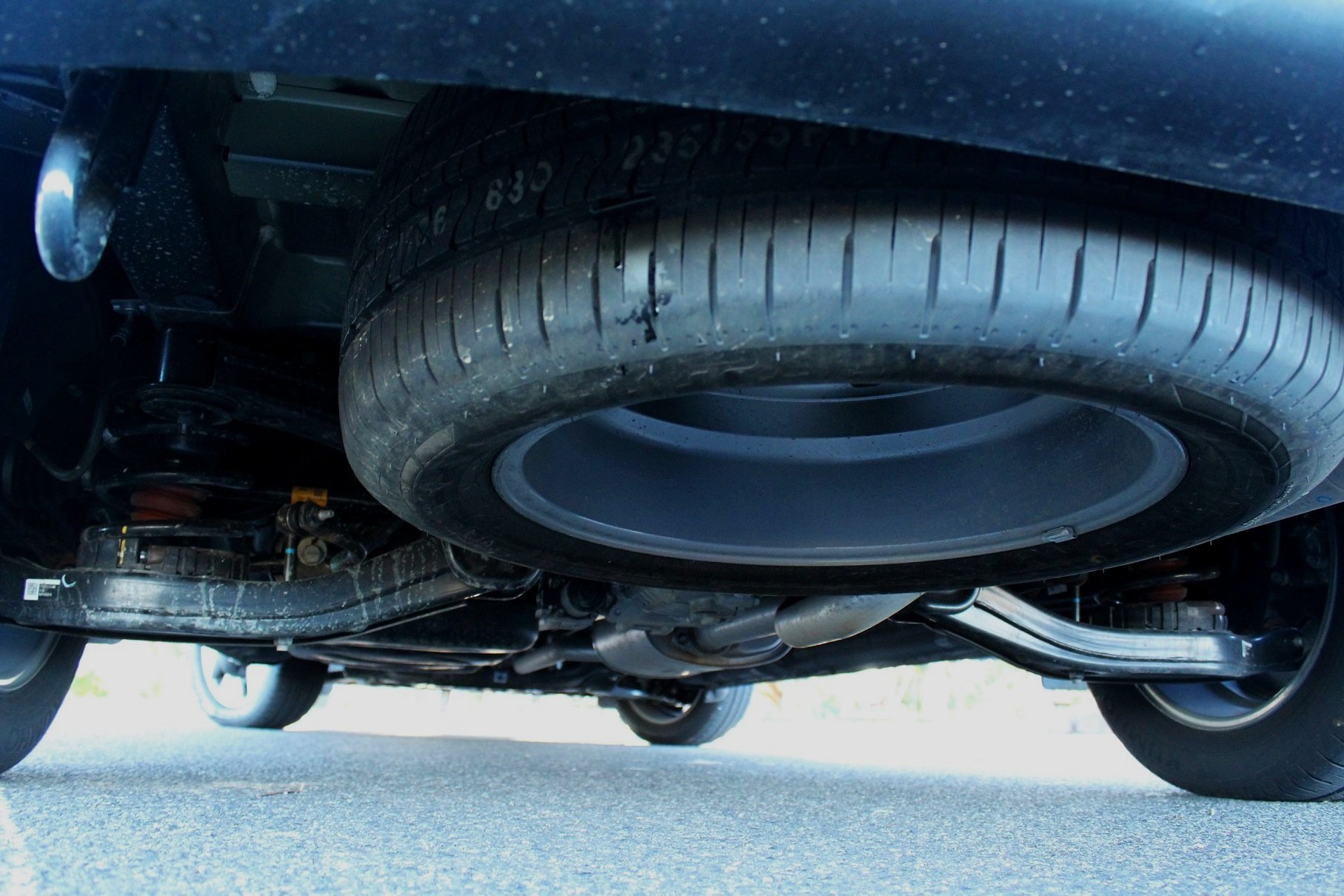
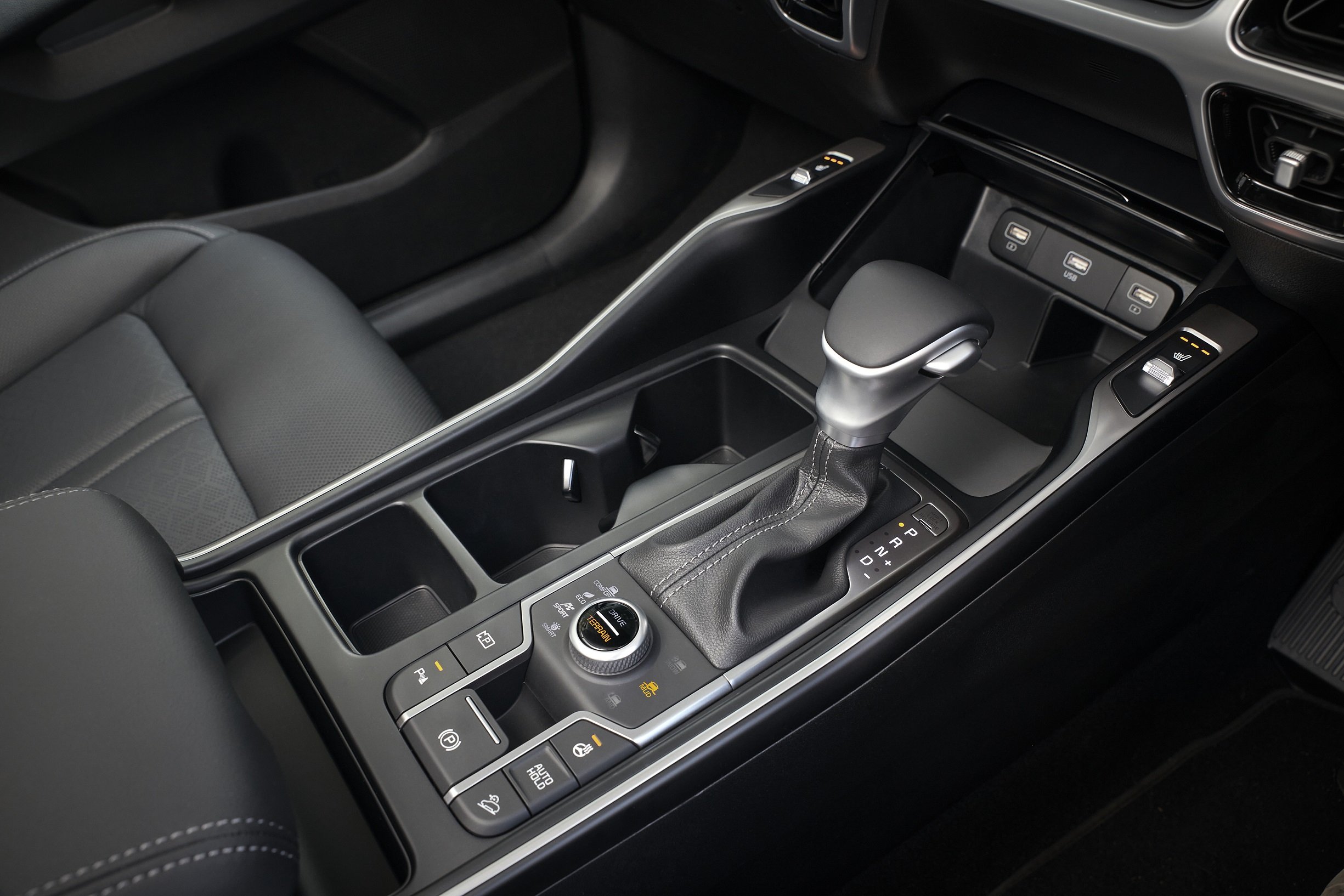

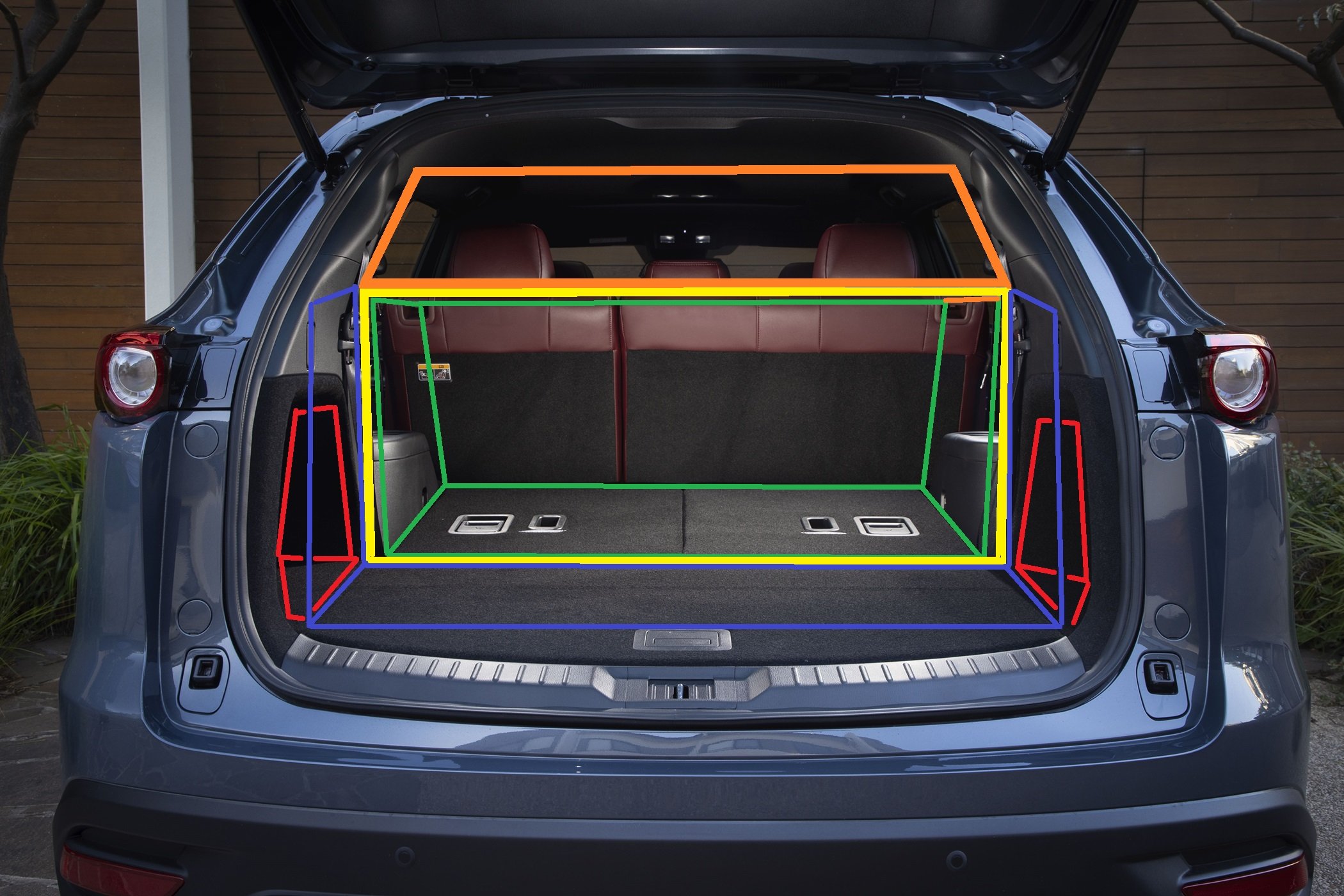
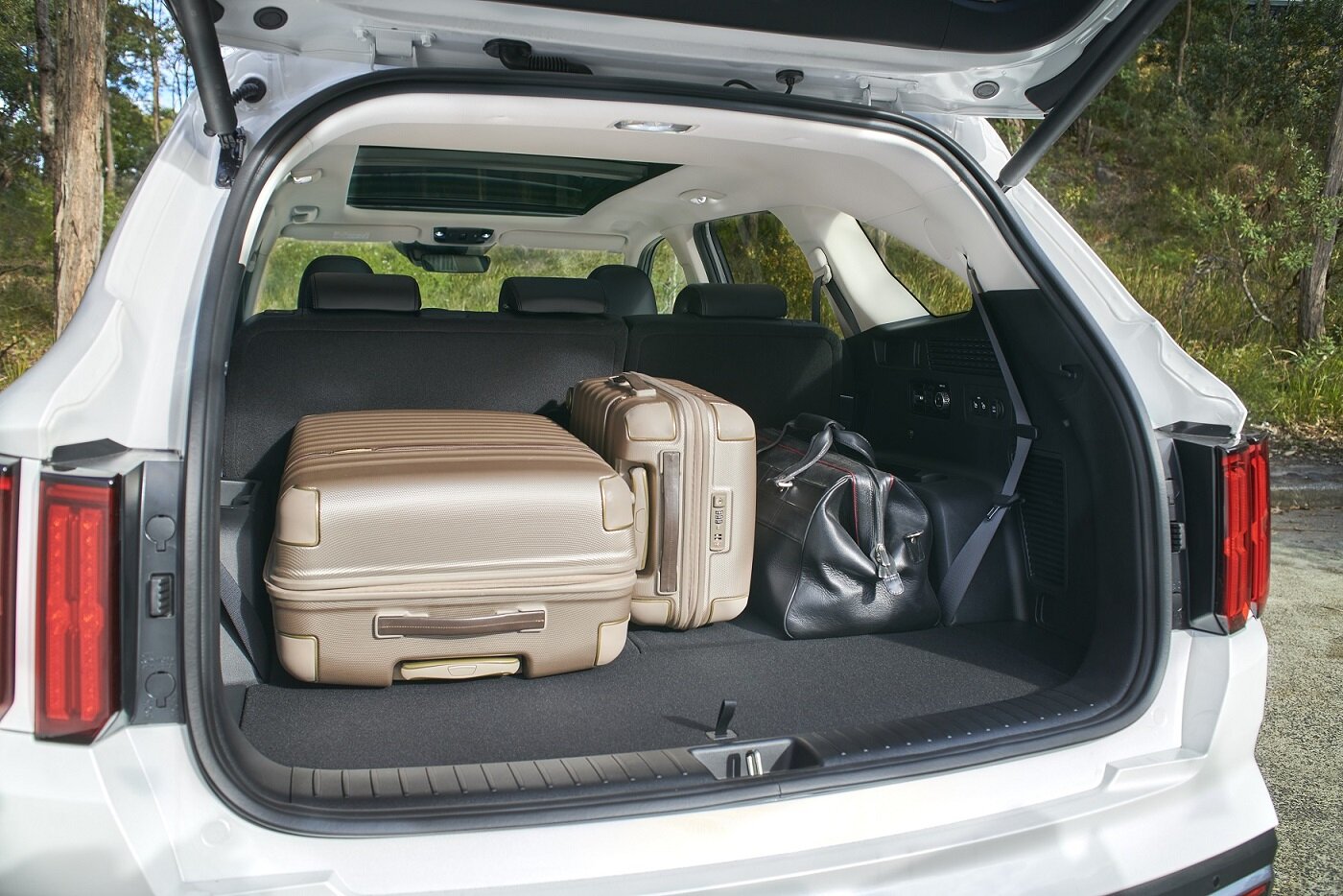




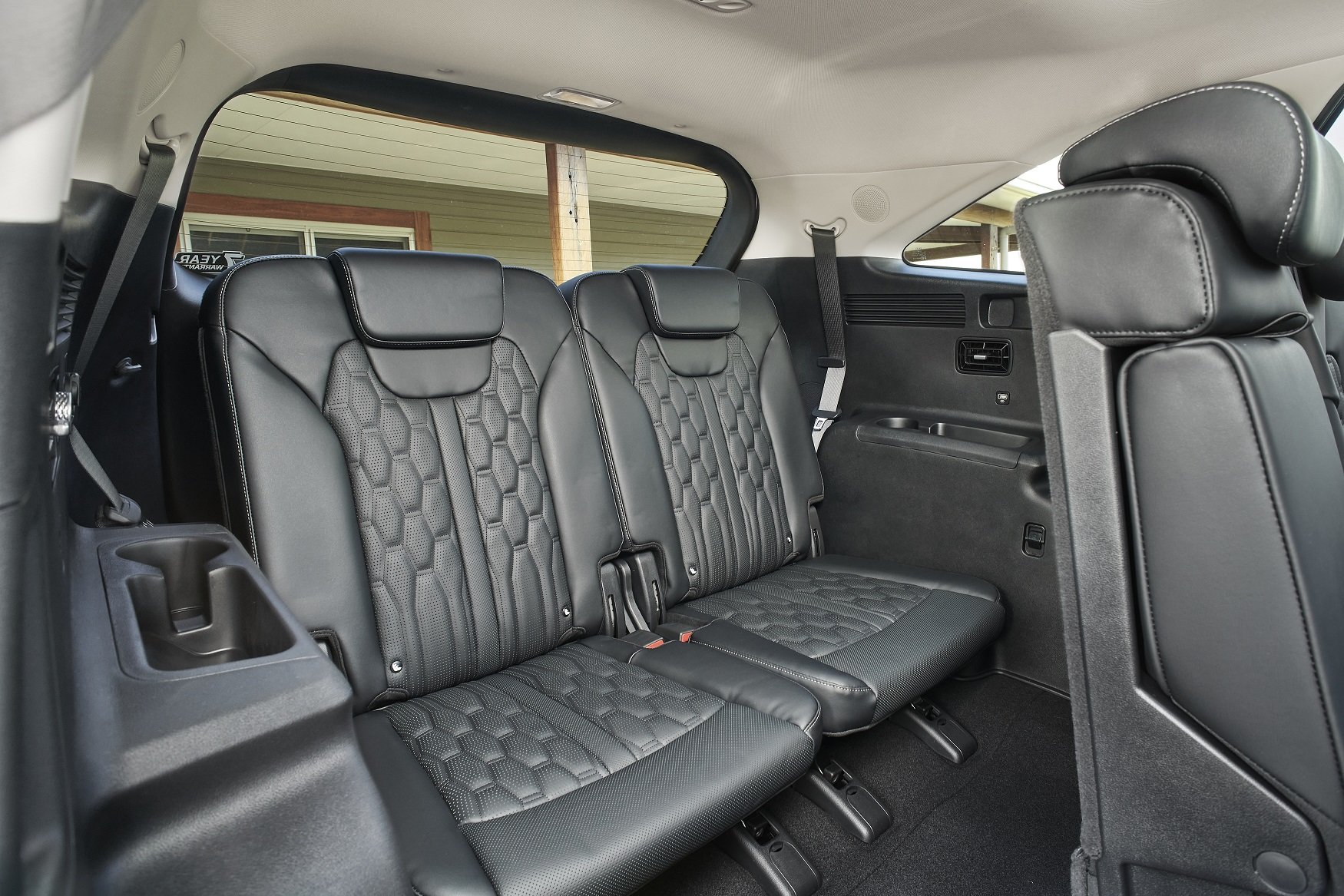

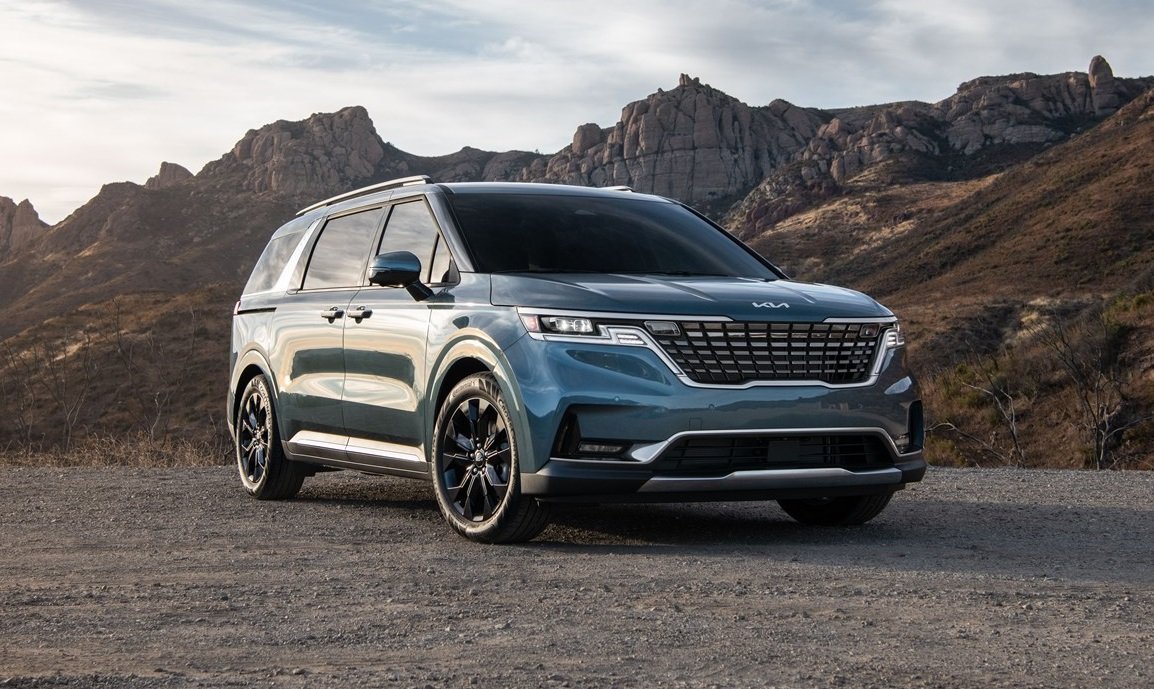
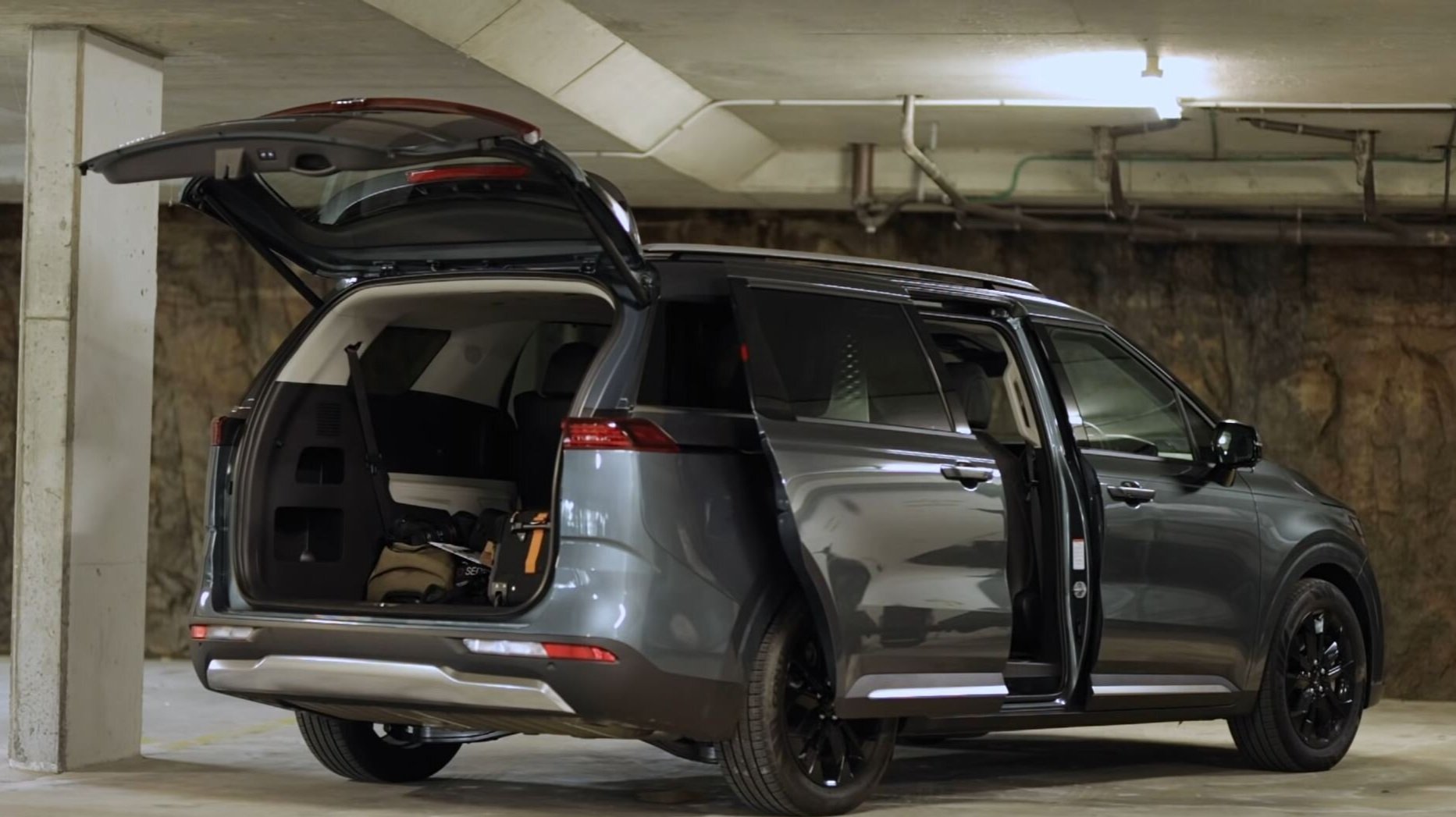
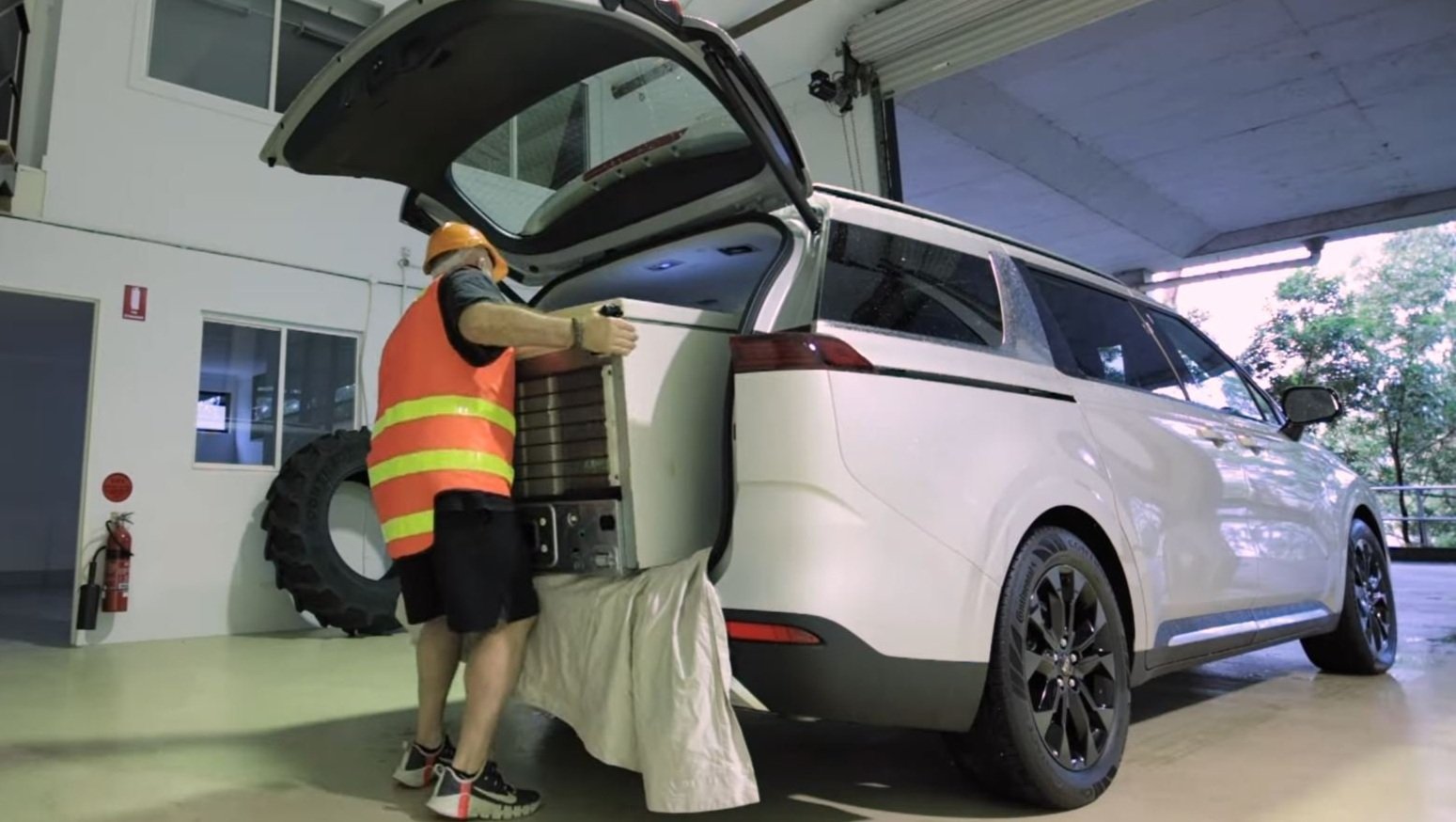
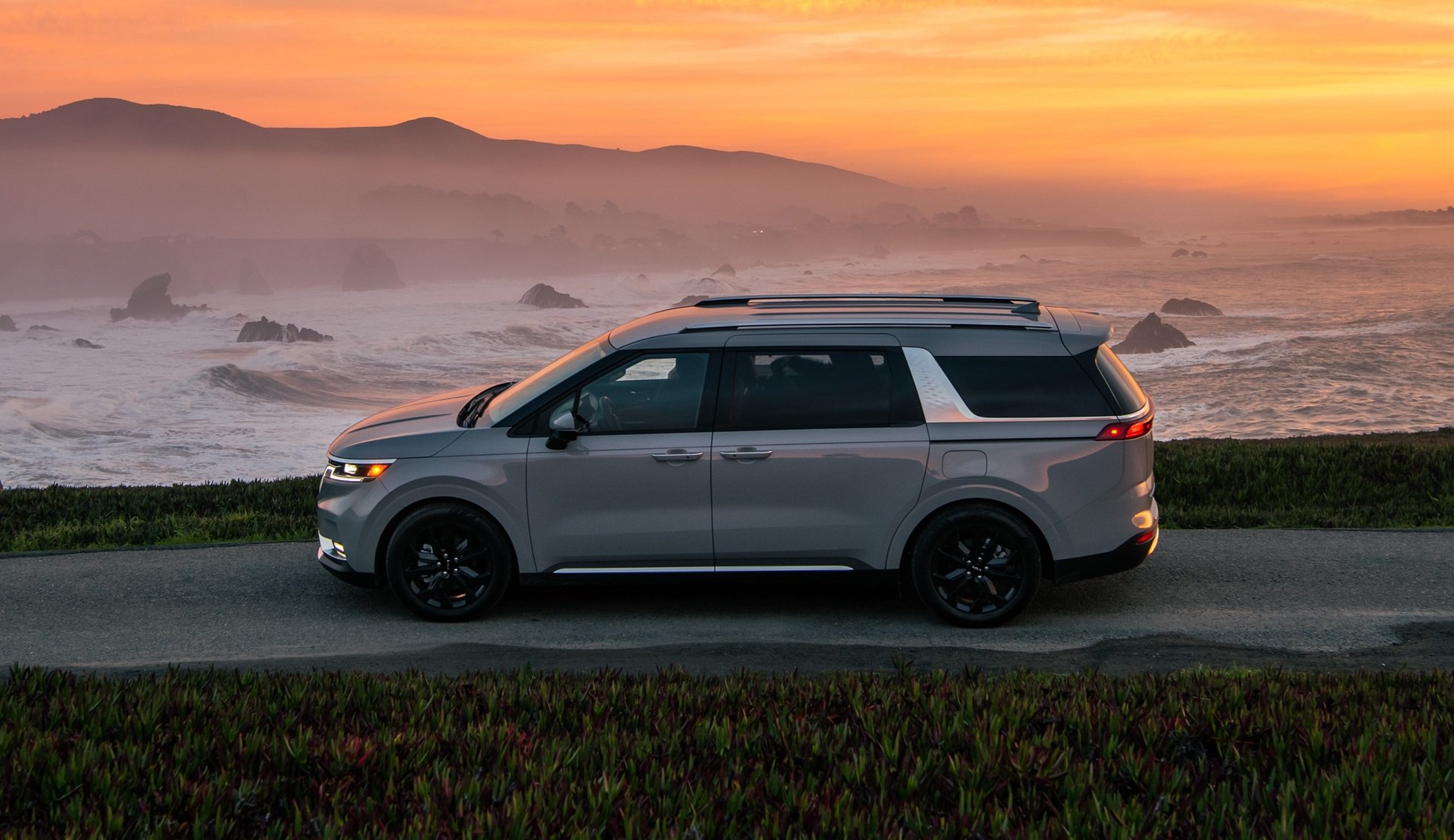
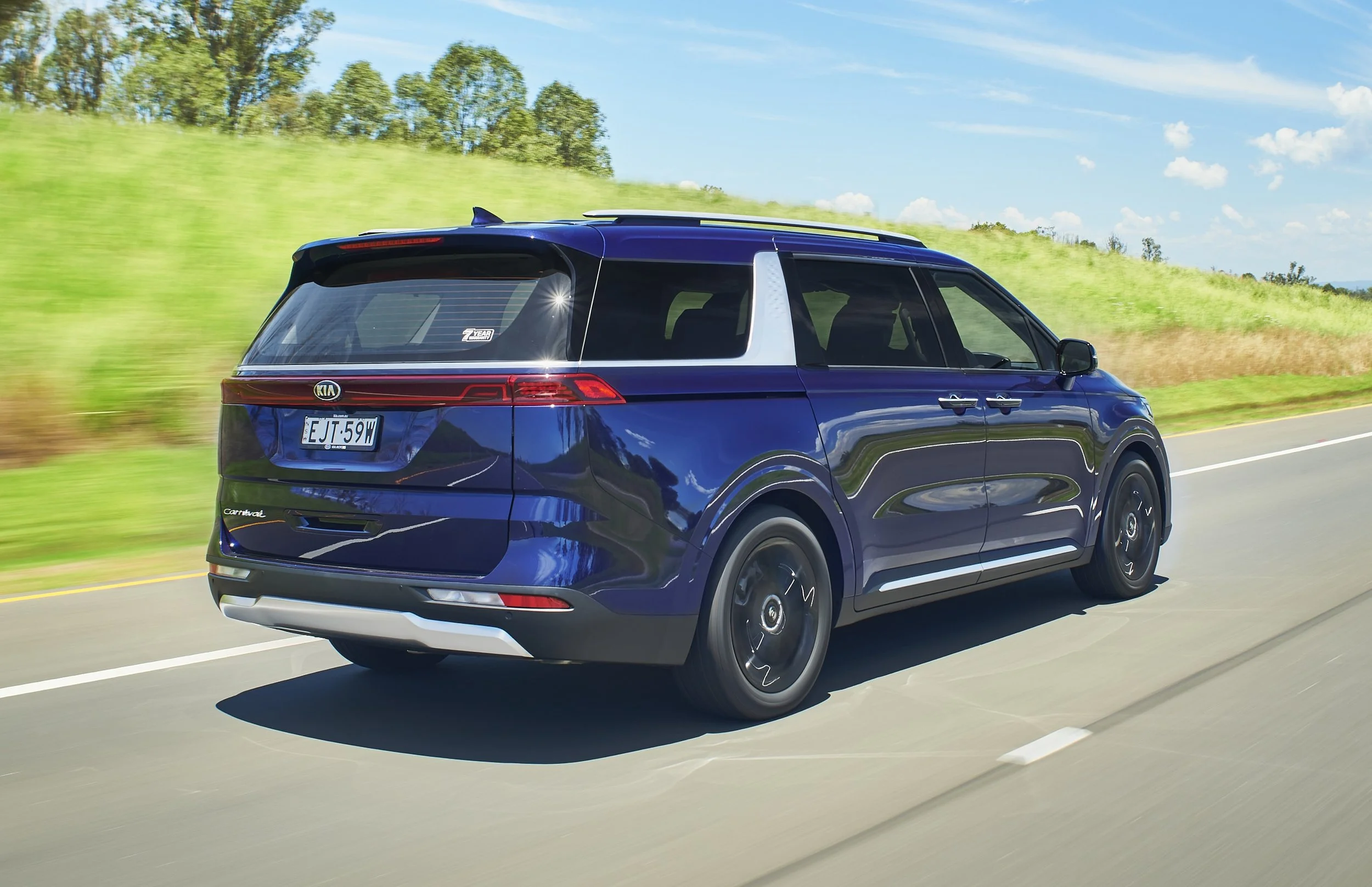
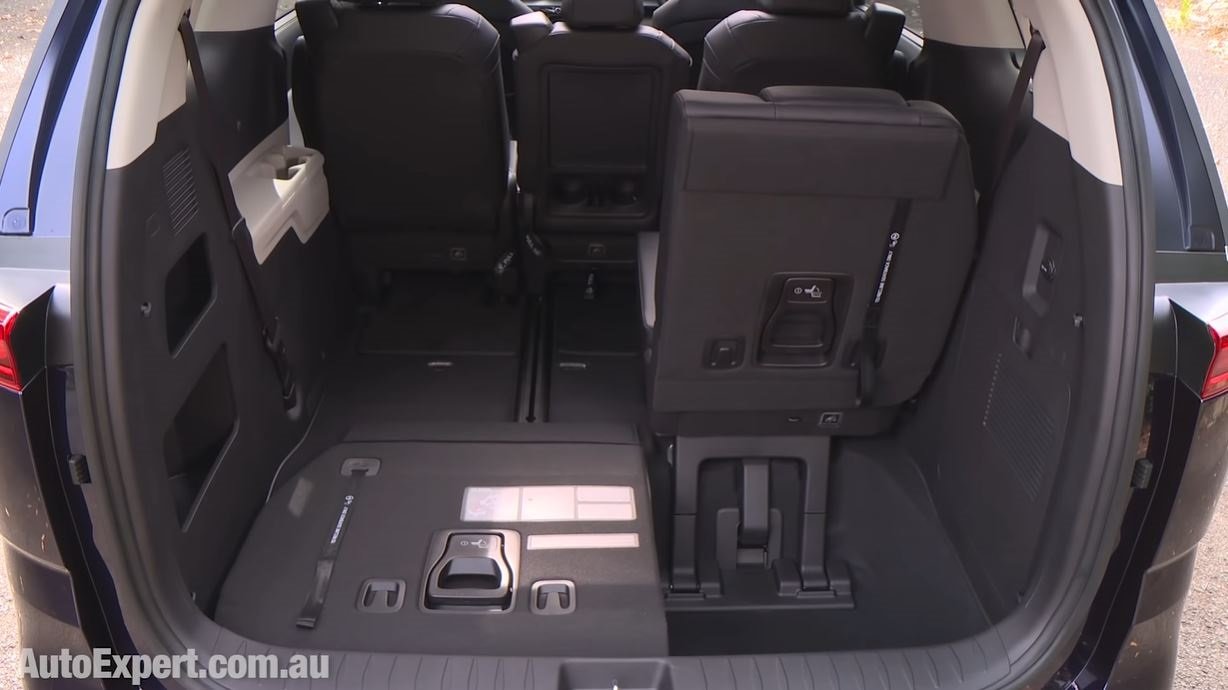
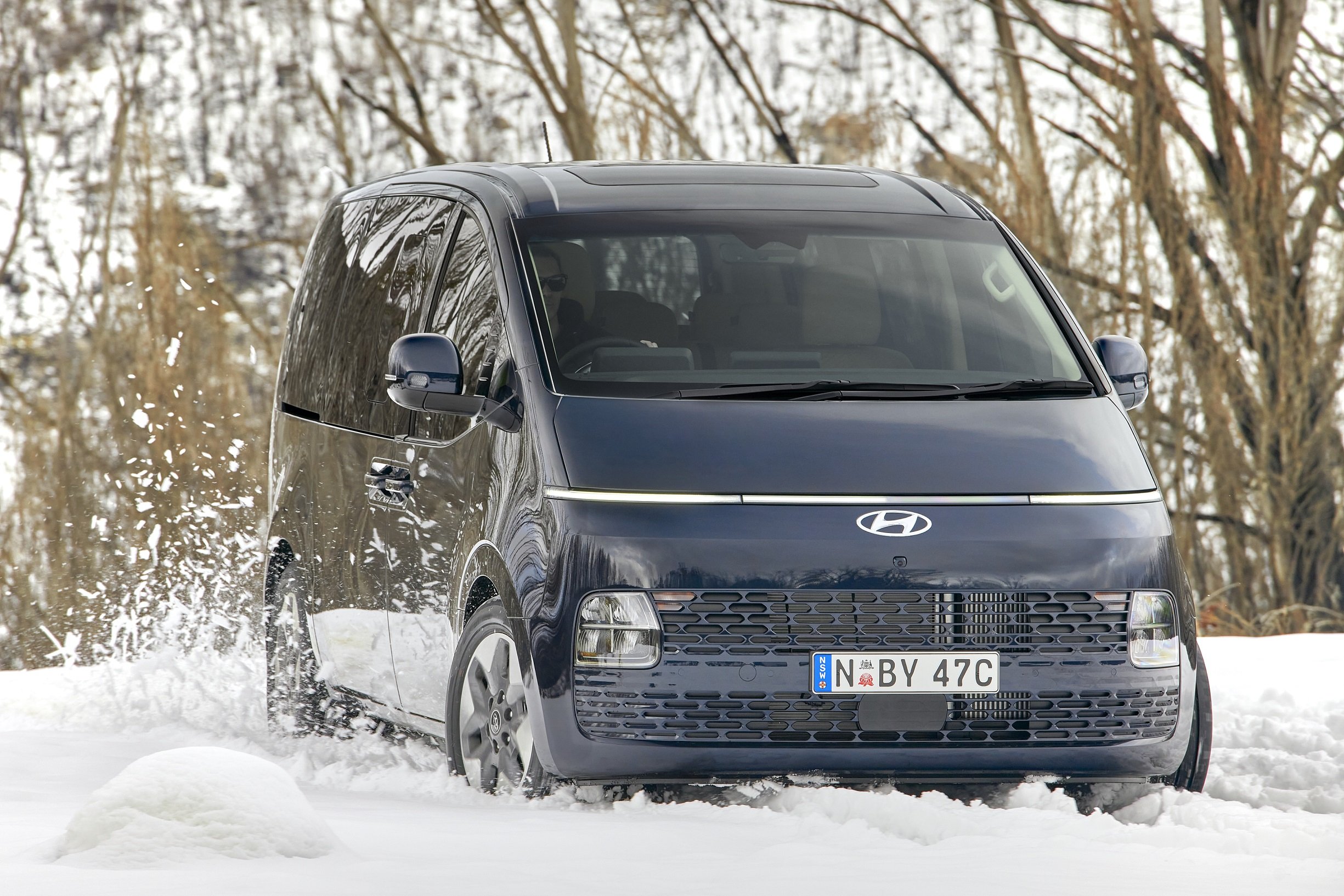
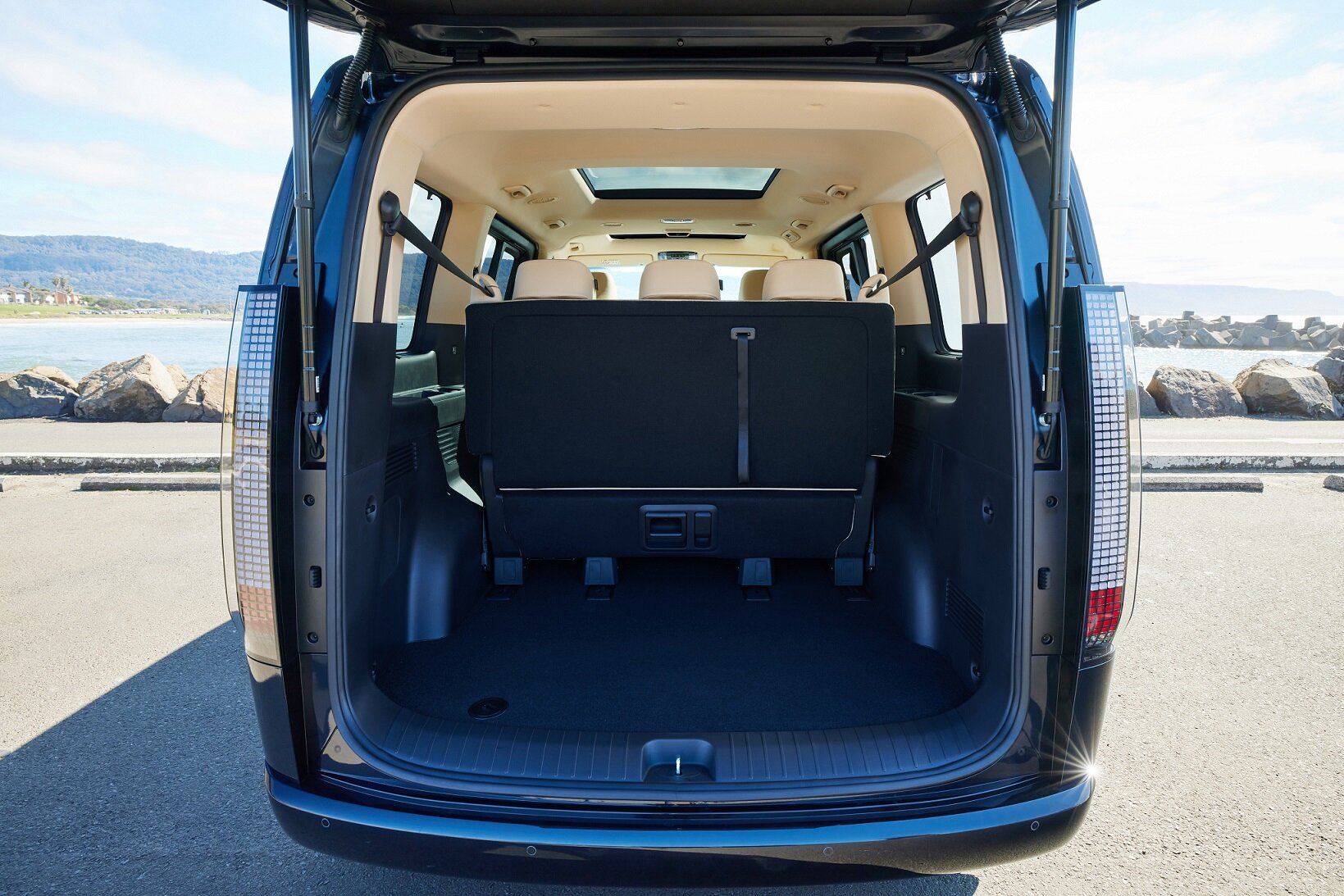
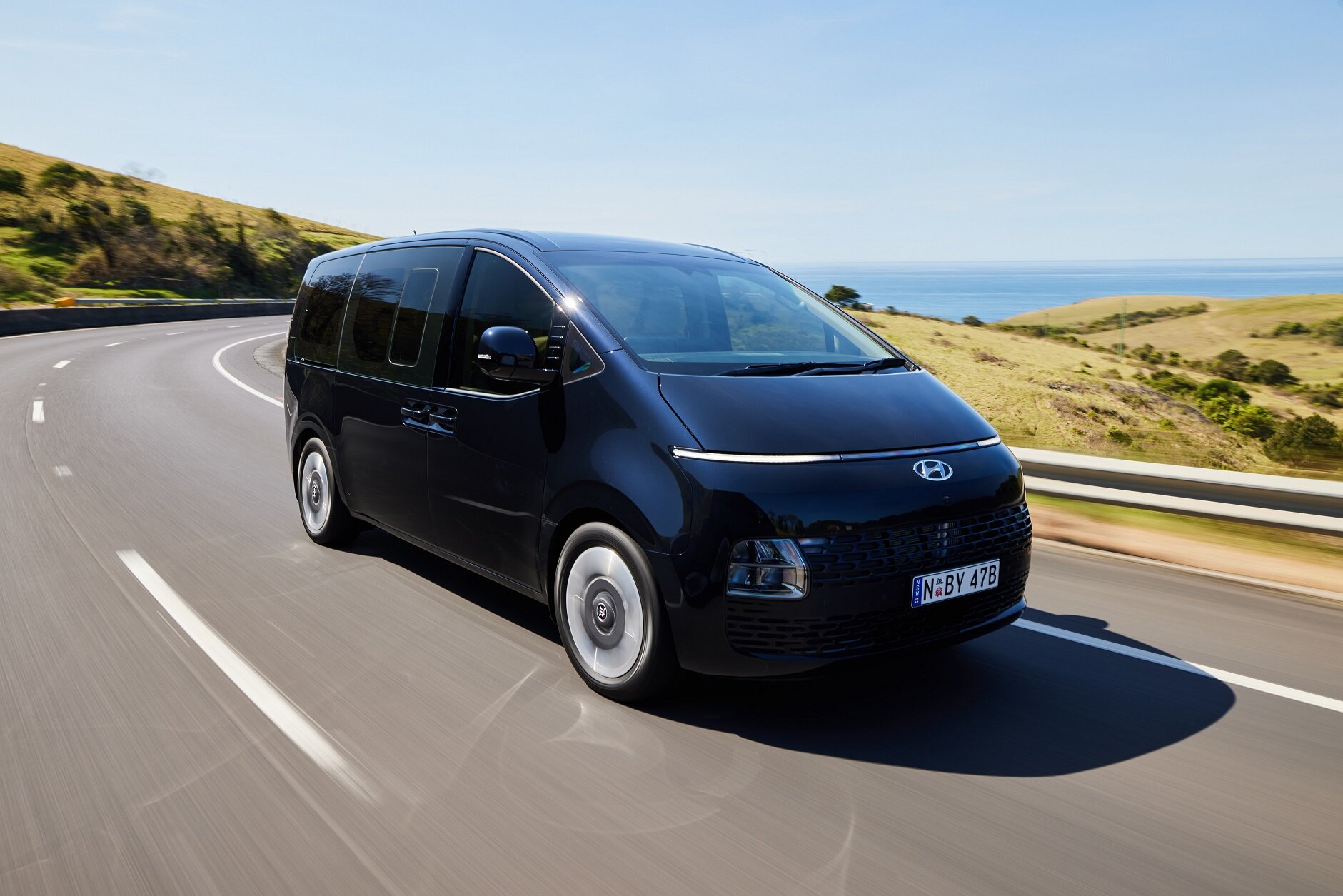
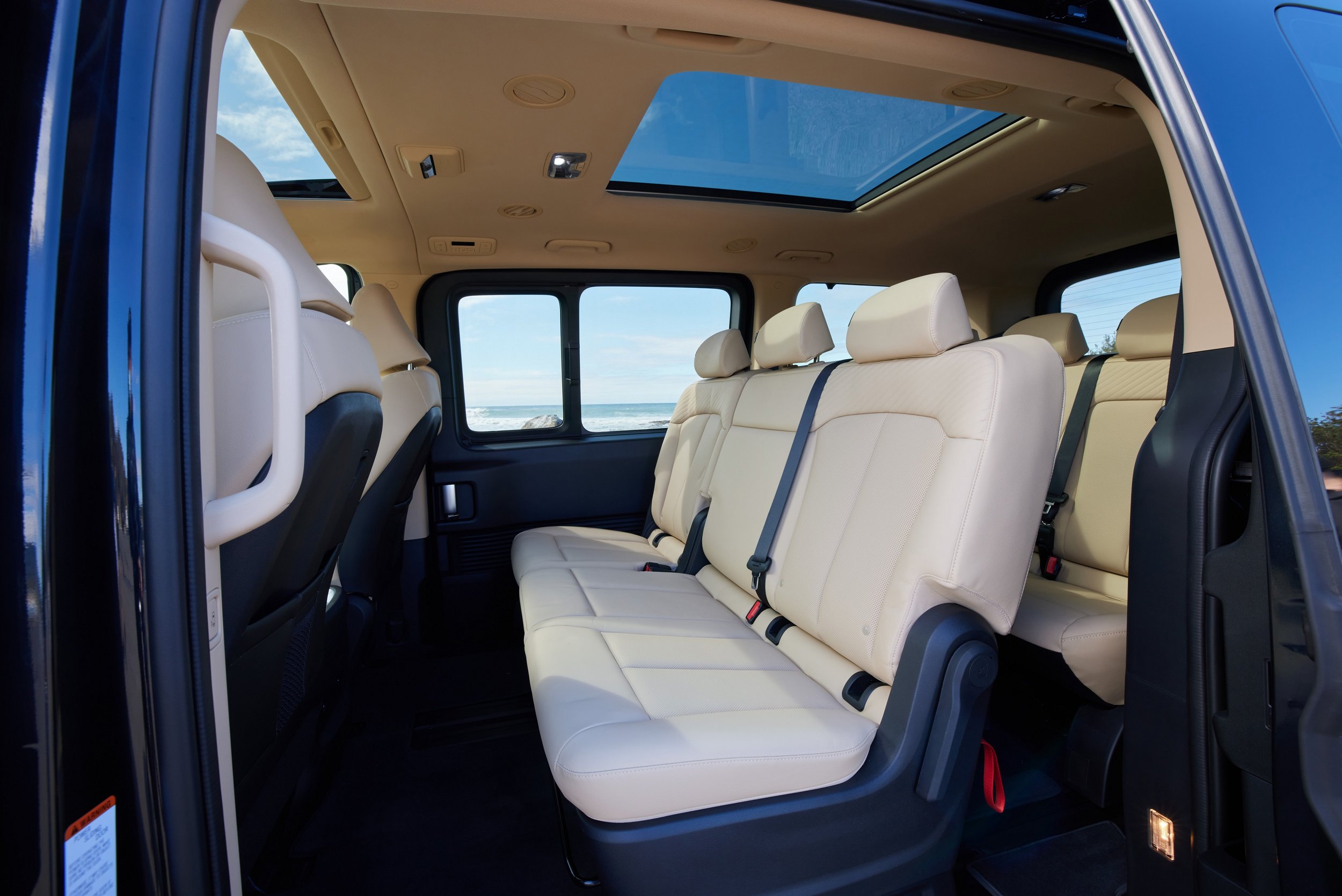
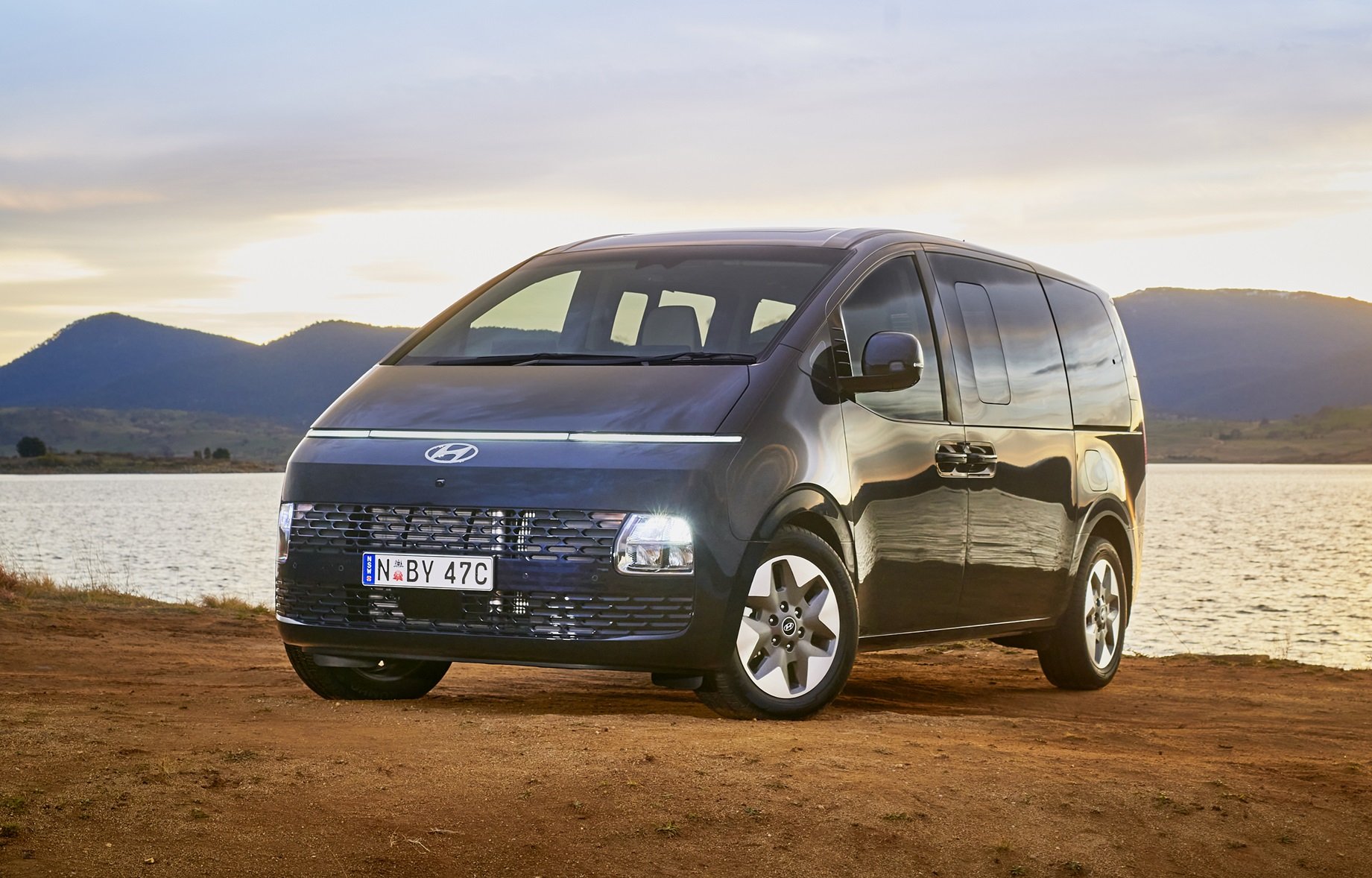
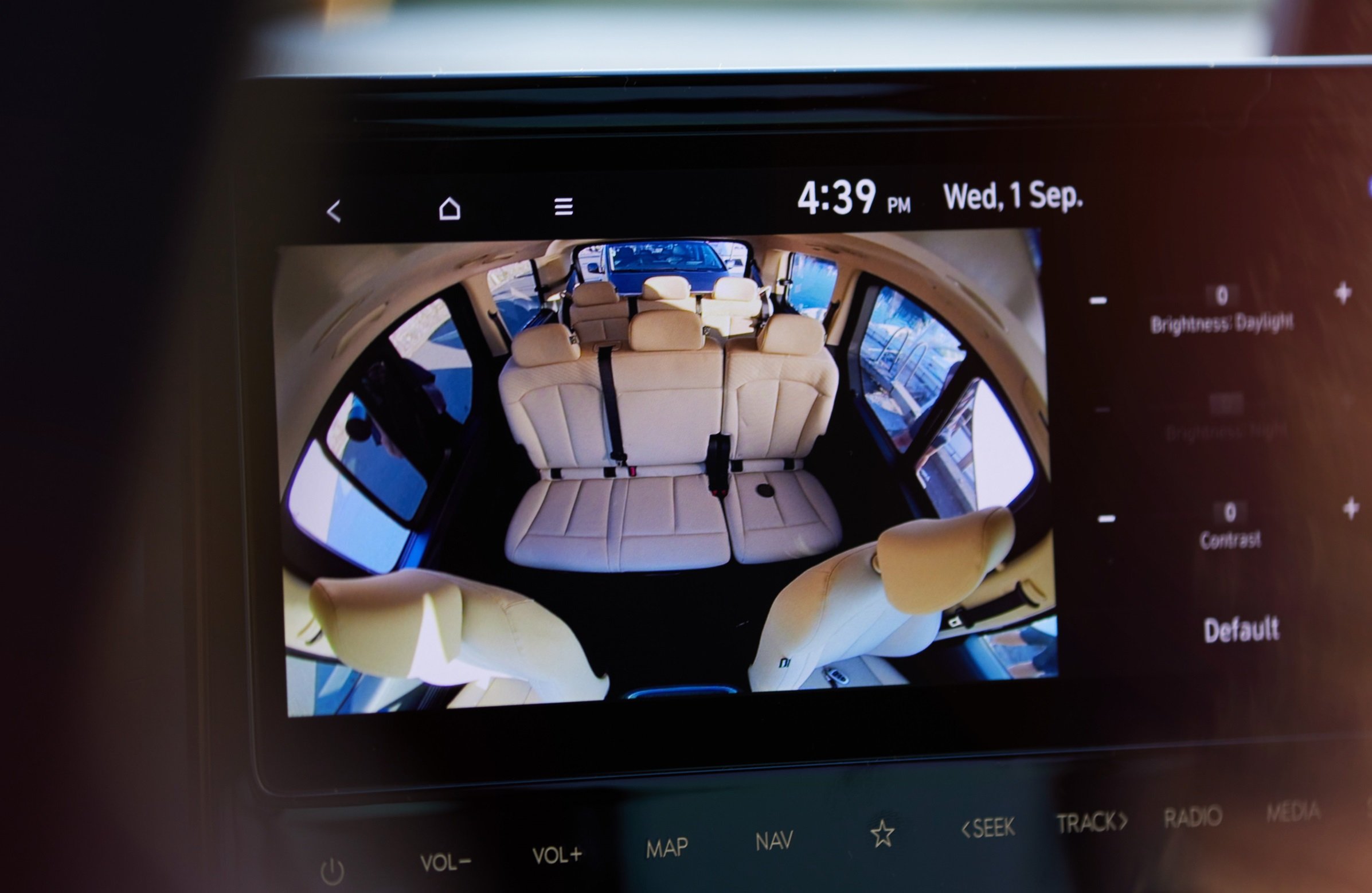


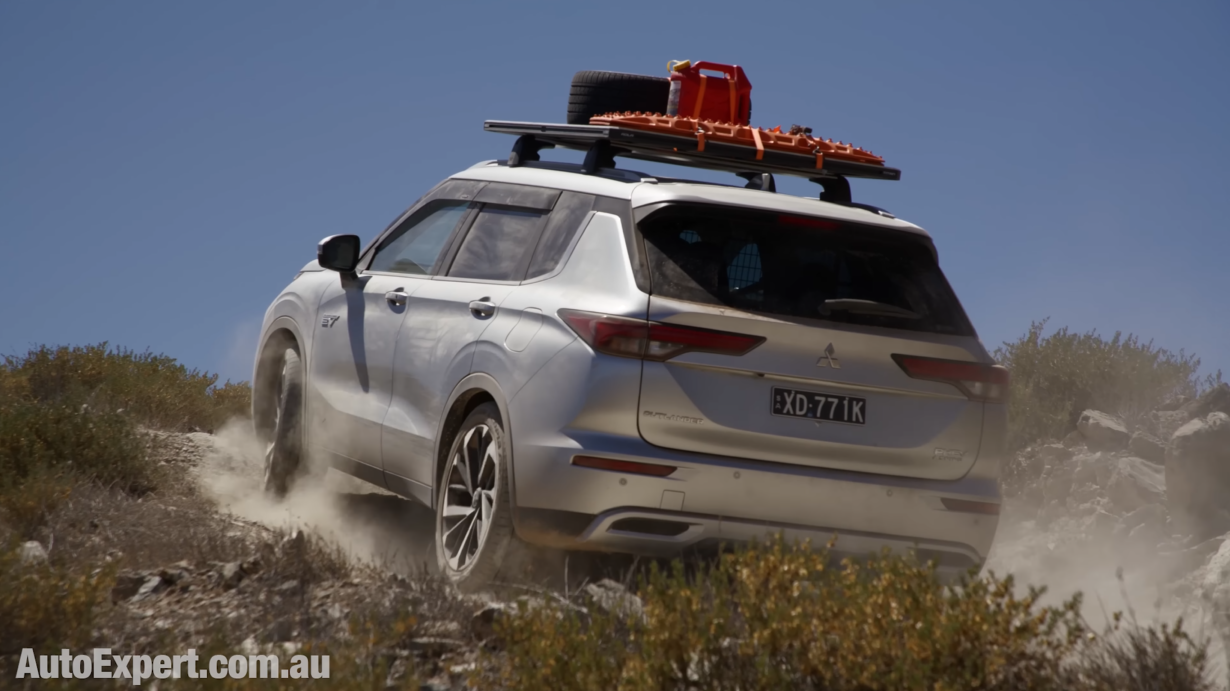
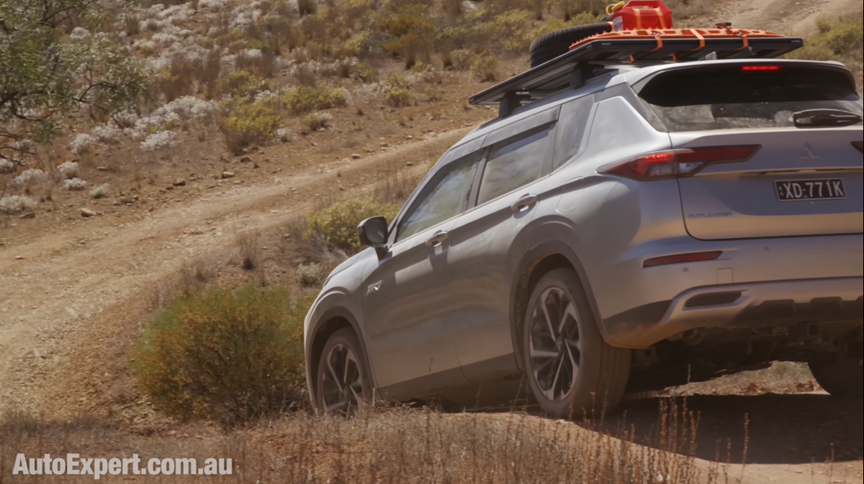
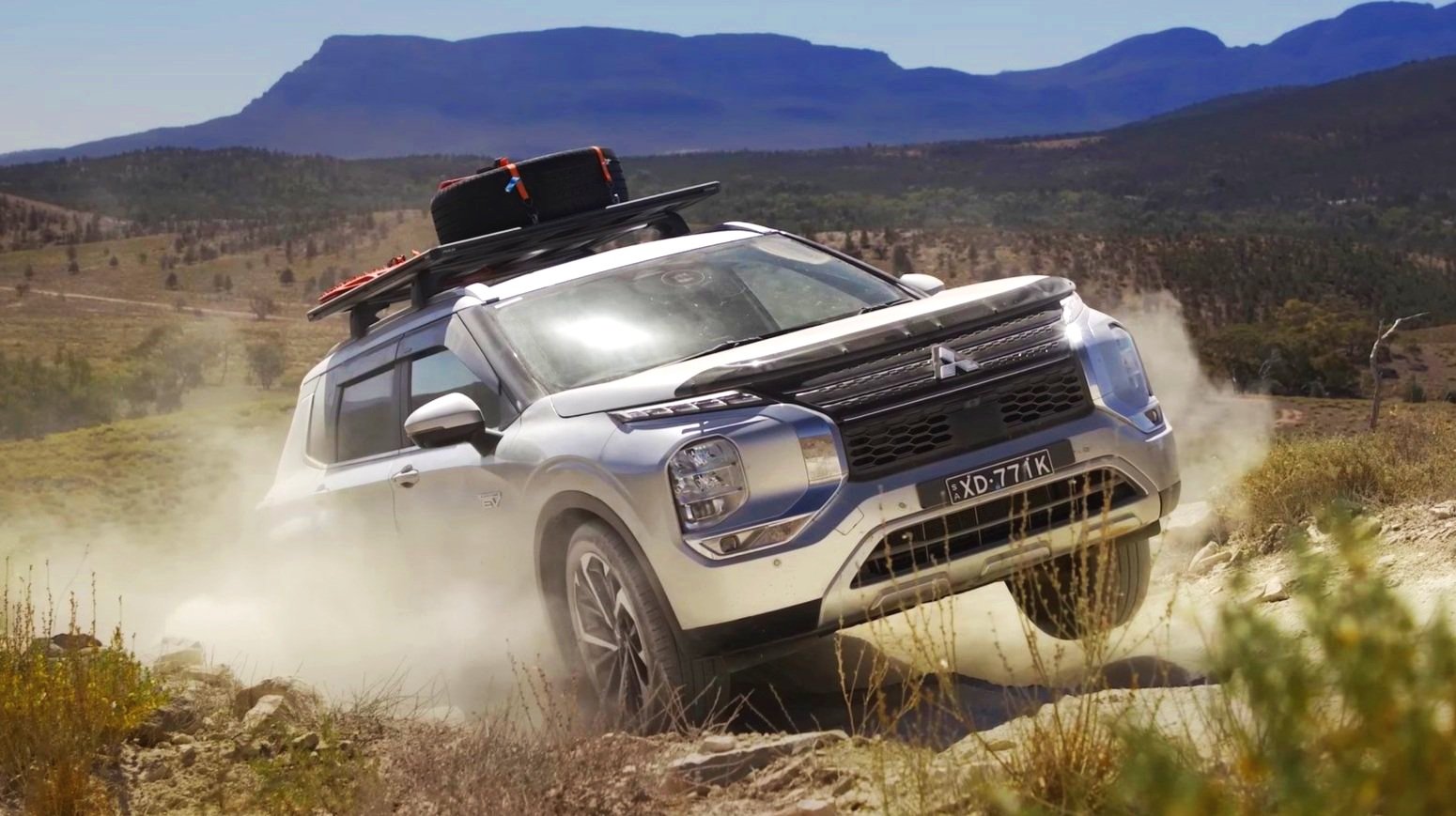

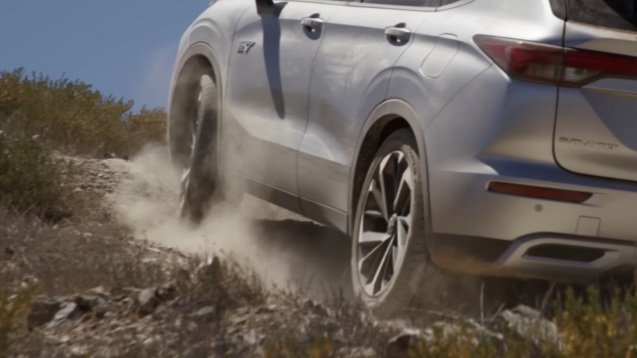

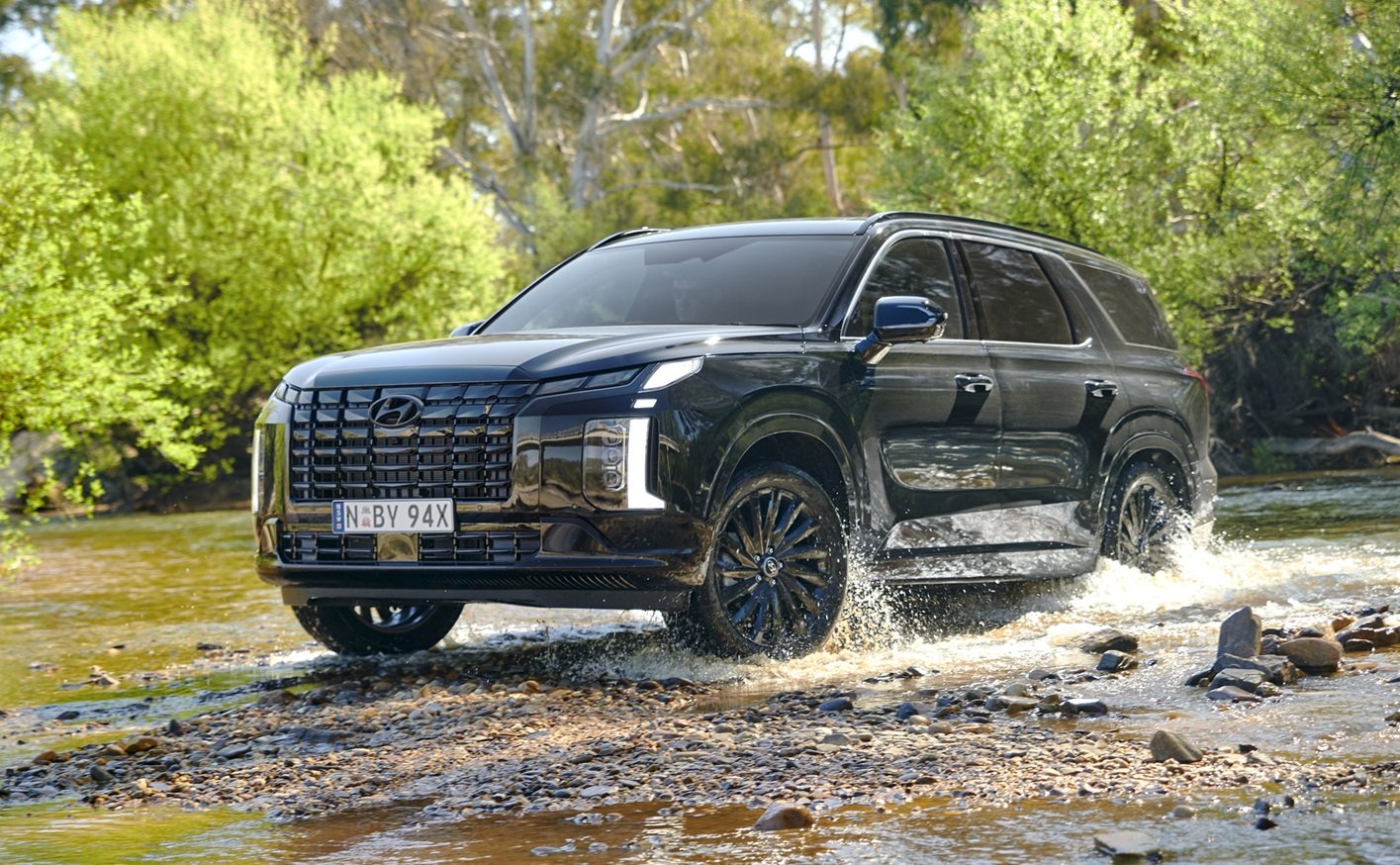
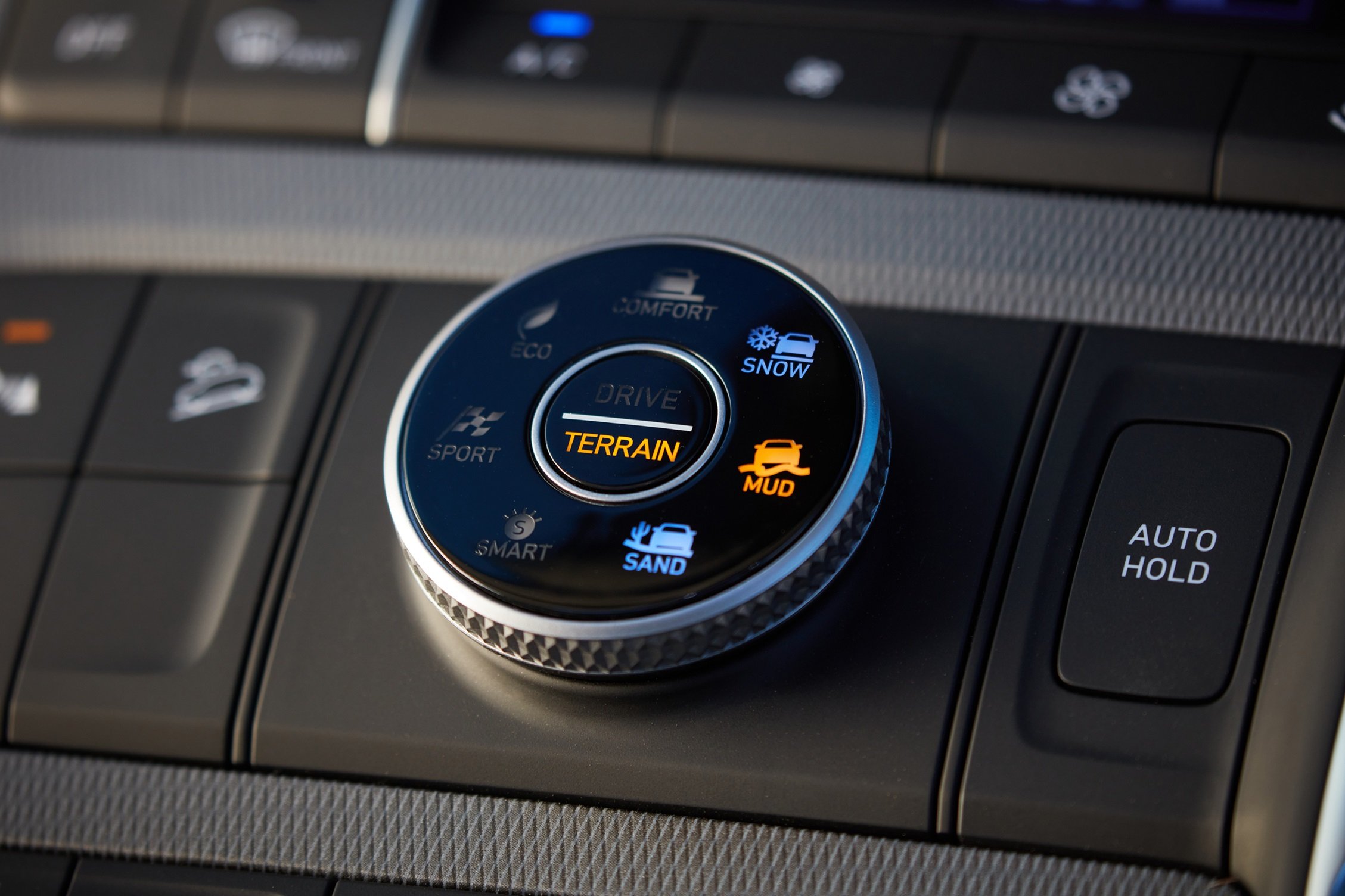
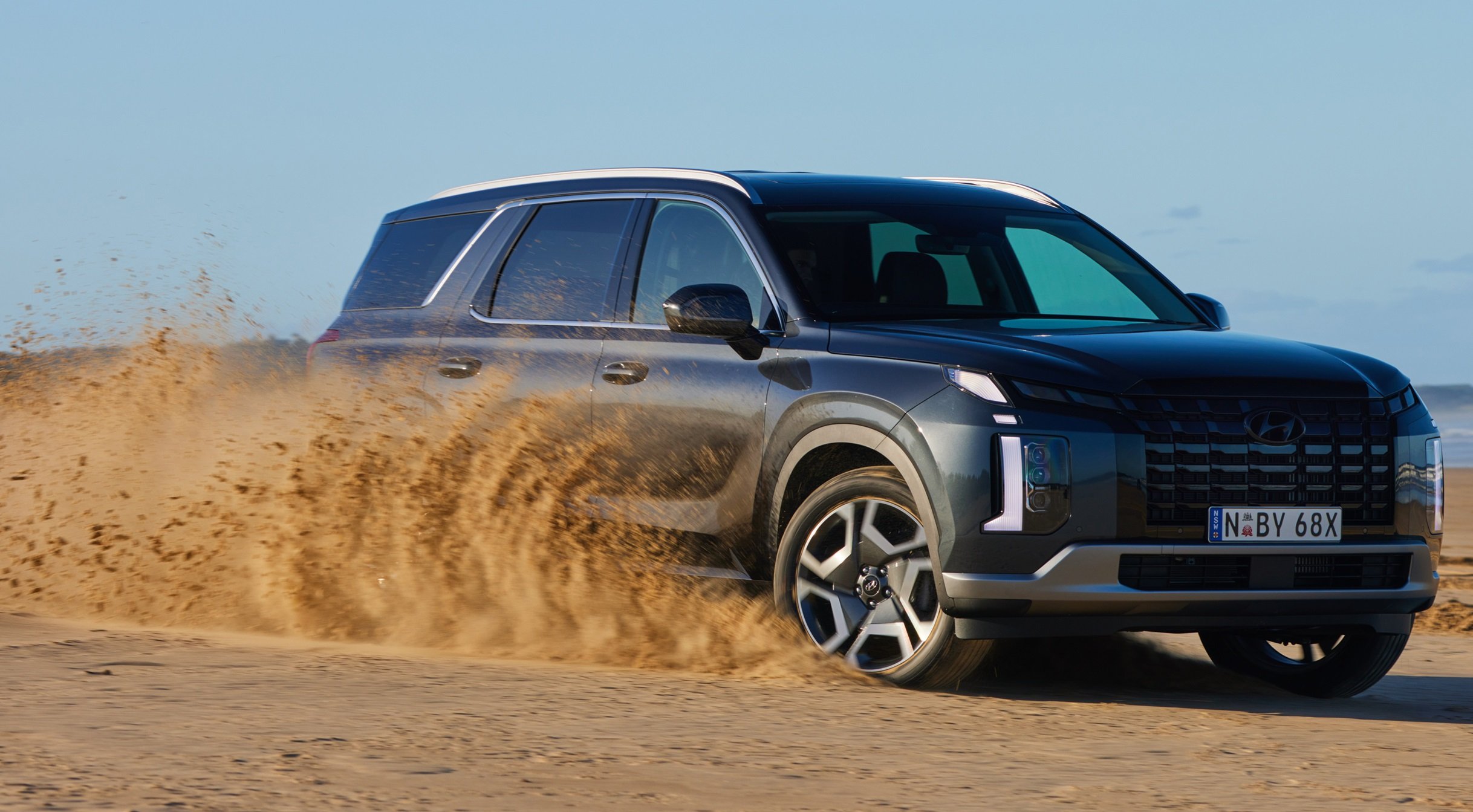
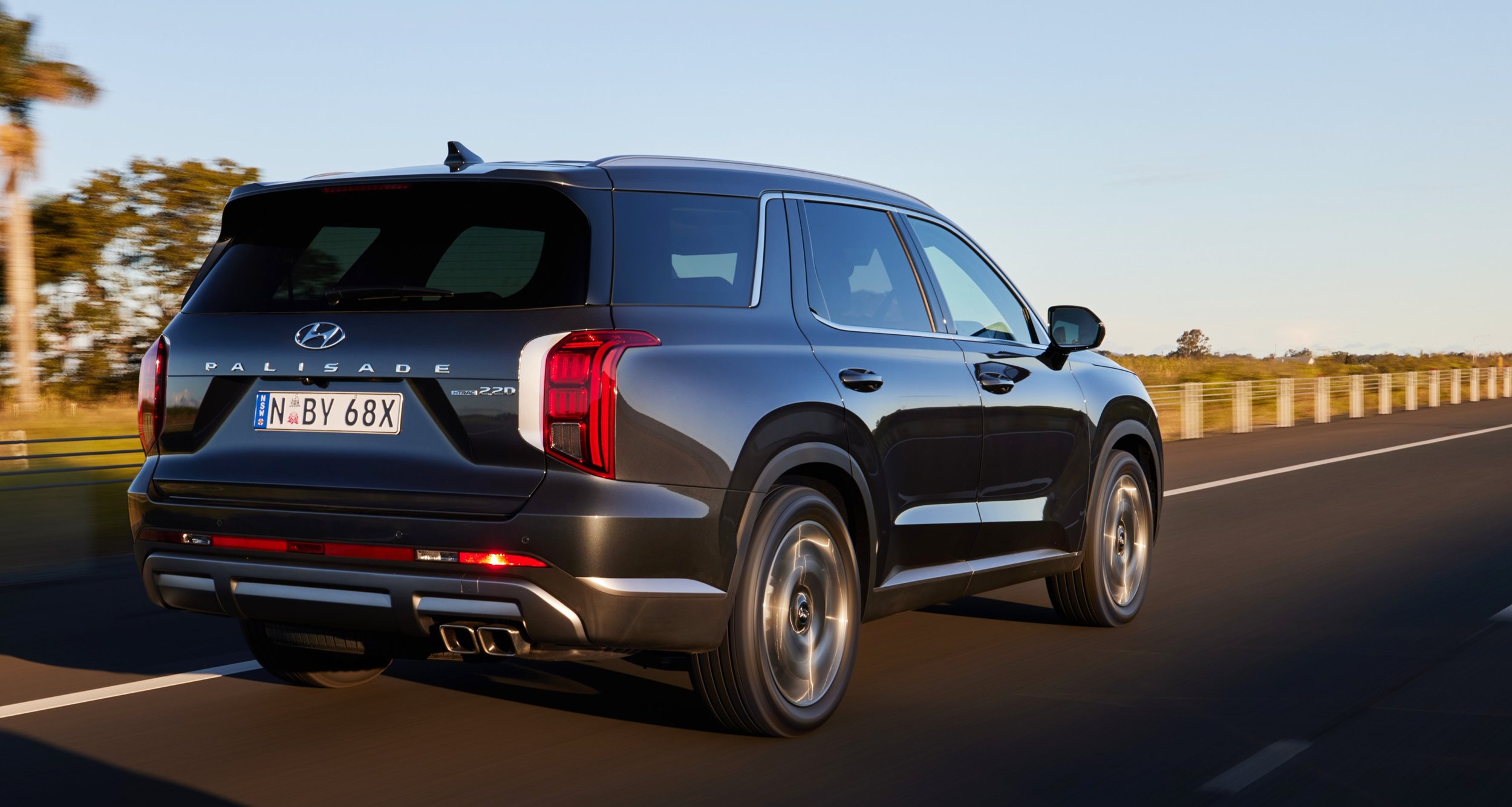
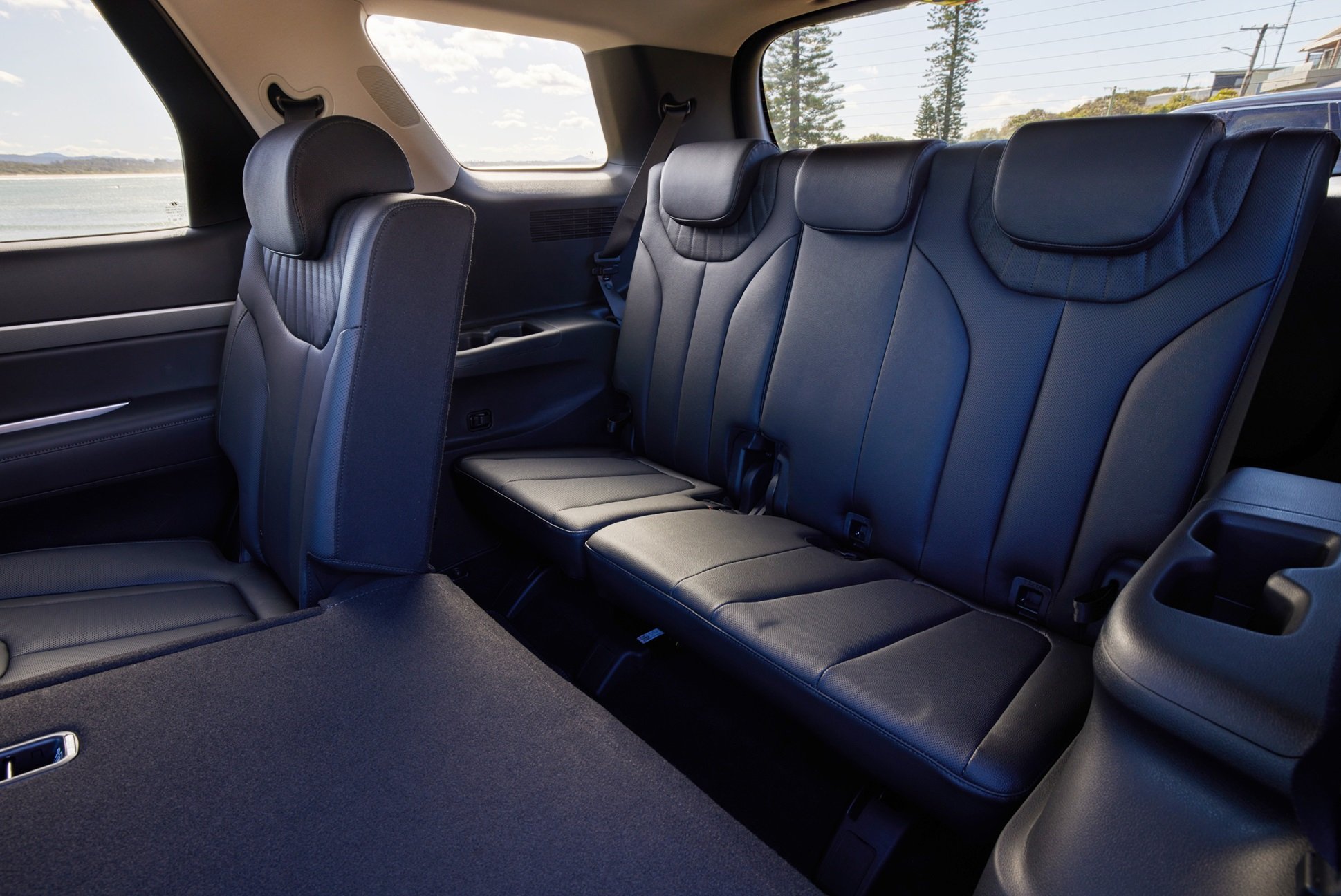





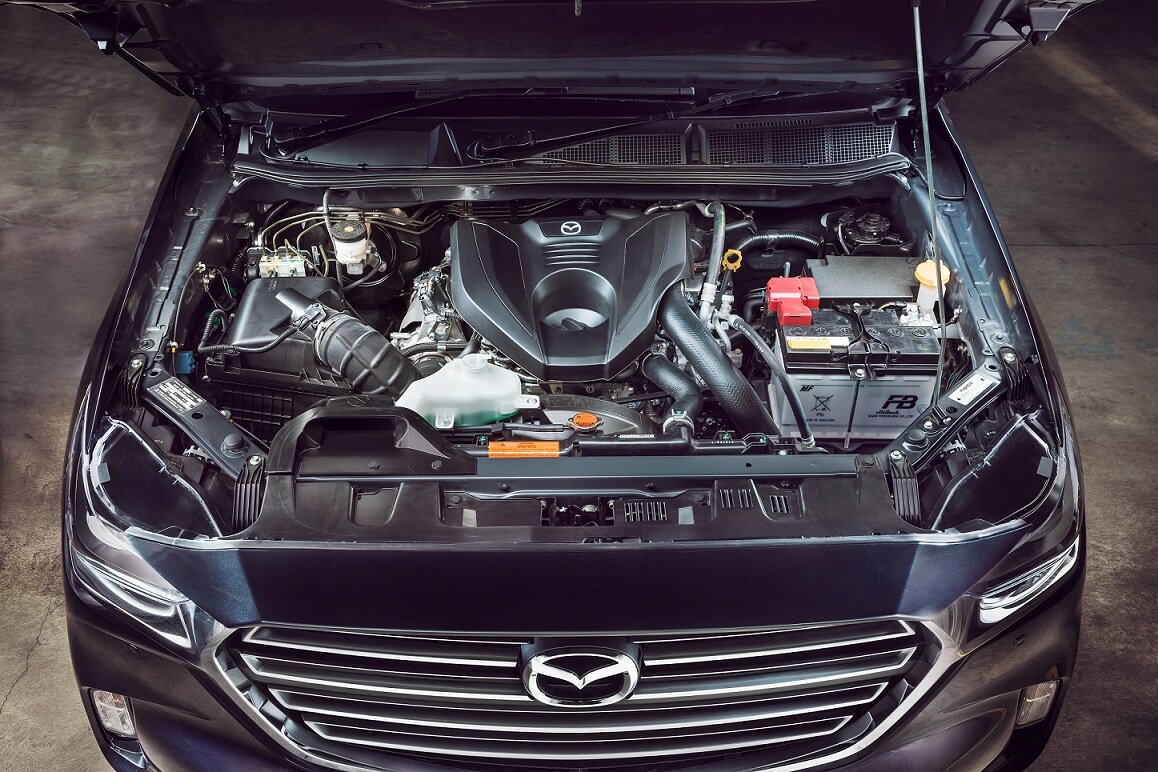


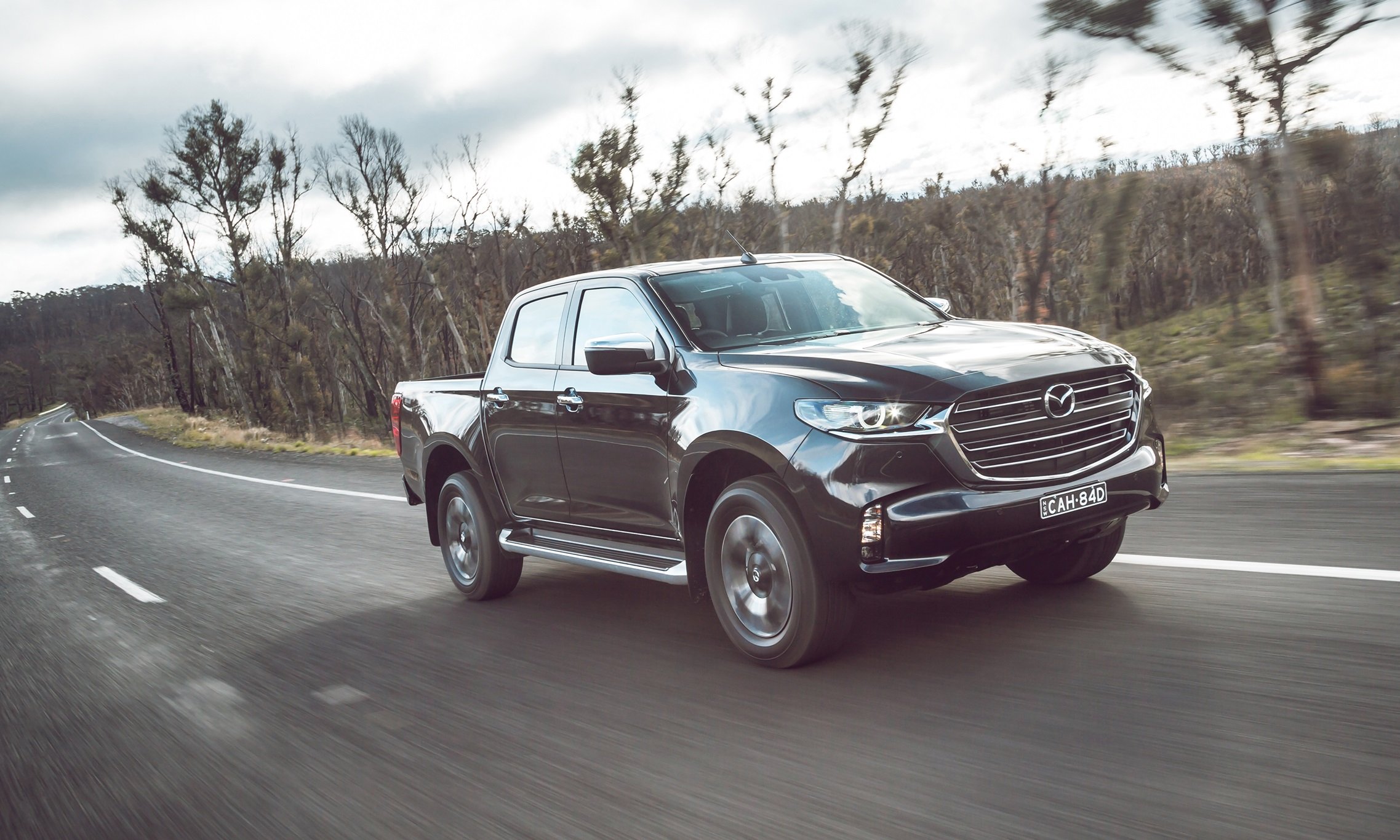
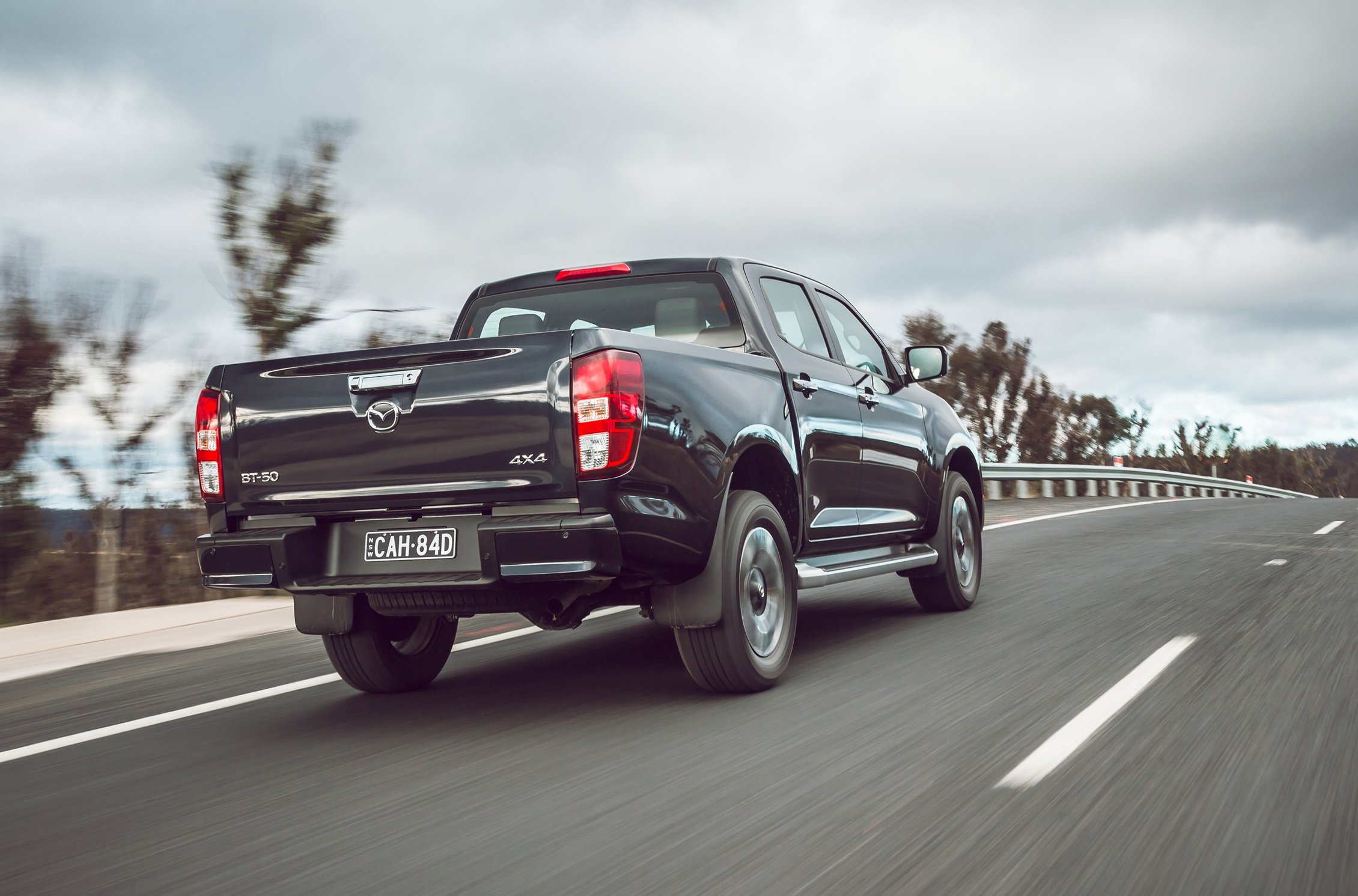











Toyota has raised the Corolla and called it a small SUV, one that offers reliability, practicality and even performance atop the range. Let’s see if there are any redeeming features that can justify the $50K price?